The Western “news” continues the same kinds of bullshit, but there has been a very significant slide into a new kind of reality that the rest of the world recognizes. It’s a different world; a Chinese world, and the West is just simply dying.
What’s going on?
Well, for one thing, the “Greek Fire Paradox” is. And that involves the combined strength and developments of both Russia and China together against the “might” of the unified West (led by the United States).
“Greek Fire Paradox”.

The Greek Fire was a substance created by the Byzantine Empire. Nobody knows exactly what it is about: it is considered the best kept military secret of all time. It is speculated that, during those ages, only two people knew its formula at the same time. In some cases, only a father and his son would know how to make it.

It was a liquid stored in a kind of giant syringe, which ignited on contact with air; basically, a primitive type of flamethrower that worked more or less like the illustration above.
The paradox is this: although the Byzantines managed to keep the secret for hundreds of years, this super-weapon had a curious and unexpected side effect: messing with the enemy’s mind. Because of that Greek Fire, the enemies of Byzantium had to look for more powerful weapons. Eventually, they would discover gunpowder (which later would evolve into the cannon, and so on).
What the history tell us is that, even if a country or entity holds a very powerful weapon, in the long run, your enemies will come up with much better and more efficient war technology, and eventually use it against you. And vice-versa.
Once the Pandora’s Box is open, there is no way to close it.
The funny thing is that, until now, nuclear weapons have functioned more as an instrument of peace rather than war, thanks to the MAD – Mutual Assured Destruction. This doctrine ensures that if one country uses nuclear weapons against another, that other country will respond with its entire nuclear arsenal, and so on, until all belligerents (or human kind) are destroyed.
Of course, nobody wants that. MAD therefore ensured a more peaceful world: without this doctrine, the world would probably have seen more bloody conventional wars. This is true for almost every nation in the world.
The current (and future) problem is that the older a particular technology becomes, the more accessible it becomes. And thus the greater it’s risk of use.

It becomes necessary for those “other” nations to come up with new, novel methods, technologies and techniques to render the strength of the old “power weapon” useless.
Florida Man Charged In $1 Billion Fraud Scheme Of Counterfeit Cisco Devices
A federal grand jury indicted a Florida man for trafficking over $1 billion in counterfeit Cisco networking equipment on Amazon and eBay stores between 2014 and 2022.
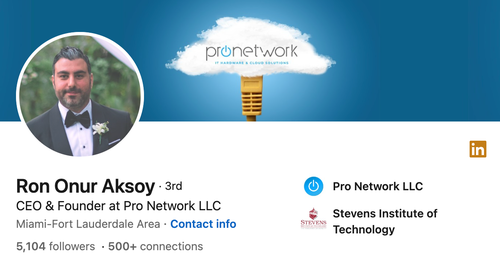
According to the Department of Justice (DoJ), Onur Aksoy, aka “Ron Aksoy” and “Dave Durden,” 38, of Miami, operated at least 19 companies formed in New Jersey and Florida that sold counterfeit Cisco networking equipment through 15 Amazon storefronts and ten eBay storefronts and multiple other entities (collectively, the “Pro Network Entities”).
Attorney for the US Vikas Khanna, District of New Jersey, and Assistant Attorney General Kenneth A. Polite said Aksoy’s scheme worked by importing network devices from China and Hong Kong (HK is de facto China) that were older models but modified to appear to be authentic versions of new, enhanced, and more expensive ones.
"The fraudulent and counterfeit products sold by the Pro Network Entities suffered from numerous performance, functionality, and safety problems. Often, they would simply fail or otherwise malfunction, causing significant damage to their users' networks and operations – in some cases, costing users tens of thousands of dollars. Customers of Aksoy's fraudulent and counterfeit devices included hospitals, schools, government agencies, and the military," the DoJ wrote in a media release Friday morning.
Aksoy generated over $100 million in revenue after selling more than $1 billion in fake networking equipment. The government alleges the Florida man “received millions of dollars for his personal gain” from the scheme.
DOJ has charged Aksoy with conspiracy to traffic counterfeit goods and mail and wire fraud, and both carry hefty sentencing times and fines.
This indictment sheds light on an entire underground economy devoted to scamming consumers on Amazon and eBay.
Terrifyingly, the counterfeit Cisco networking equipment could’ve been installed in critical systems for companies and or even government agencies, making them more vulnerable to a ransomware attack or unexpected performance issues.
FOX News Media presentation
Please check out the dress color coordination, the seat positioning, and the diversity presentation.

Country Captain (Southern-Style Stewed Turkey with Curry, Dried Fruit, and Almonds)
This colonial dish speaks to North America’s deep historical ties to the Indian Subcontinent.

Country Captain is an iconic Southern, Low Country dish with direct, unadulterated link to India.
It traces its roots to a time when Savannah, Charleston, and other Southeastern ports were the North American gateways for spice trade with the East Indies.
These towns were the entry points for black pepper, cinnamon, nutmeg, ginger, cardamon, sugar, and other ingredients that would eventually make their way into the cuisine of the American South.
Many of the dishes that use these flavorings are more “Western” in inflection—the spices are subtle with little connection to the dishes of their mother lands.
Not so with the Country Captain.
Even in its most Southern avatar, this is clearly an Indian American dish. I am forever grateful to Chef Currence for introducing me to this historical recipe, for every time I make it I am reminded that we have much in common—we need only to look at what we are cooking.
*This recipe is often made using chicken; feel free to swap out the turkey for other poultry, or even pork chops or veal cutlets.
Featured in: “On Curry Powder and Colonialism.”
Ingredients
- 1 cup all-purpose flour
- Kosher salt and freshly ground black pepper
- 12 turkey cutlets* (about 3 oz. each), about ½-in. thick
- ¼ cups ghee
- 2 tbsp. unsalted butter
- 1 strip thick-cut bacon, finely chopped (¼ cup)
- 2 large yellow onions, finely chopped (2 cups)
- 4 medium carrots, peeled and finely chopped (1⅓ cups)
- 1 large red bell pepper, finely chopped (1 cup)
- 1 large yellow bell pepper, finely chopped (1 cup)
- 4 garlic cloves, thinly sliced
- 2 tbsp. minced fresh ginger
- 2¼ cups canned crushed tomatoes
- 2 medium tomatoes, finely chopped (1⅓ cup)
- ½ cups dried currants (or substitute dried cranberries or raisins)
- 2 small dried red chilies (such as árbol) stemmed and broken in half
- 2 tsp. Madras curry powder
- 1½ tsp. garam masala
- ½ tsp. Kashmiri chili powder
- ½ cups chicken stock
- 2 tbsp. finely chopped parsley
- ¼ cups toasted silvered almonds
- Steamed white rice or grits upma, for serving
Instructions
- Line a large rimmed baking sheet or platter with paper towels and set it by the stove.
- In a large, shallow bowl, season the flour to taste with salt and black pepper, stir, and set aside.
- To a large, high-sided skillet over medium-high heat, add the ghee. Working in batches, lightly dust the turkey cutlets in the seasoned flour and, when the ghee is hot, sear lightly, about 20–30 seconds on each side. Transfer the cutlets to the lined baking sheet and set aside.
- Using paper towels, wipe the skillet clean and set over medium heat. Add the butter and bacon and cook, stirring frequently until bacon begins to brown, about 3 minutes. Add the onions and continue cooking, stirring frequently, until they’re translucent and very soft, 6–8 minutes. Add the carrots, bell peppers, garlic, and ginger, season lightly with salt and black pepper, and cook, stirring frequently, until the vegetables are tender, 6–8 minutes. Stir in the canned and fresh tomatoes and another pinch of salt and black pepper, lower heat to medium-low, cover, and cook, stirring occasionally, until the tomatoes start to break down and thicken, about 20 minutes.
- Stir in the dried currants, dried chiles, curry powder, garam masala, and chile powder, then add the stock. Turn the heat up to medium to bring the mixture back up to a simmer and cook, stirring occasionally, until the currants are plump, about 5 minutes. Slide the reserved turkey cutlets back into the skillet and cook until the meat is heated and cooked through, 4–6 minutes.
- Garnish with chopped parsley and toasted slivered almonds and serve hot, with steamed white rice or grits upma.
The Idea MUST be to weaponize the world!
United States “pledges” to “shut down” Chinese IC manufacture
The US Secretary of Commerce recently repeated the remarks, naming SMIC for “shutting down” China’s largest chip manufacturer if it ignores US sanctions and supplies chips to Russia.
SMIC responded today that “there has never been a Russian customer.”
On June 28, the U.S. government blacklisted five Chinese companies for allegedly supporting Russian military and defense industrial bases.
This is the first time since the outbreak of the Russo-Ukrainian War in February that the US side has taken action against Chinese enterprises.
U.S. Commerce Secretary Gina Raimondo said on June 29 that U.S. Commerce Secretary Gina Raimondo would shut down China’s largest chipmaker, SMIC or other Chinese semiconductor companies, IF they were found supplying chips to Russia, according to central news agencies today.
She pointed out that since the United States and allies imposed export controls on Russia because of Russia’s invasion of Ukraine, global chip exports to Russia have plummeted by 90%.
According to the it of the land media IT home, some investors asked SMIC whether there were Russian customers on the e interactive platform today, and SMIC replied: “The company has always adhered to compliance operations and has never had Russian customers.” ”
Article HERE
Banana lore from Indonesia
Never ever go to the local market and say that you just want to buy “Banana” ( Pisang in their local language).
The seller will be confused and will ask for the details of what kind banana you want?
Its different if you go to the Super Market. You will meet only the Cavendish Banana or the Western known Banana.

BUT… in the local market, especially the fruit stall, there are so many kinds of Bananas. In Indonesia it depends on what you need to do with that Banana.
These are a variety of the famous banana that you can find in the local market.

- Horn Banana (Plantain) / Pisang Tanduk

This massive banana is not sweet and the texture is hard. It tastes good when fried and the local also add chili sauce or sweet sauce.

2. Kepok Banana / Pisang Kepok

These look like pressed fat bananas, they’re sweet but very hard if they aren’t ripe. The local use it to feed their pet birds and mainly to eat in a sweet soup dish, Kolak.

3. King Banana / Pisang Raja

They’re big. This banana is mainly eaten raw; it’s big, sweet and has a soft texture.
4. Milk Banana / Pisang Susu

The size is medium. This sweet banana is good to eat raw. This banana’s skin is rather thin when compared to the other bananas.
5. Ambon Banana / Pisang Ambon

They’re big. This banana can be found in two colors. The taste is medium sweet.
6. Lady Finger Banana – Gold Banana / Pisang Mas

This banana is so small and the taste is sweet.
All of the bananas have their own unique taste and texture. Just buying a banana in Indonesia can make you stressed.
Oh… and have I mention that there are some jungle bananas that you can rarely find too? Like the Red Banana or the Crazy Big Musa Ingens Banana?
Happy Eating Bananas in Indonesia 😀
China Holds War Drills Around Taiwan “Directed” At US Senator’s Visit To Island
China is again conducting major military exercises in waters around Taiwan, according to state media reports, which further decried US support to Taiwan separatist forces as “futile”.
China’s Defense Ministry was cited in Reuters as describing the drills as a warning aimed at the visit of a US senator. It said “China firmly opposes the visit by a US senator to Taiwan which severely damages the relationship of the two countries and two militaries, while it added that the drill near Taiwan is directed at US and Taiwan provocation.”
US Senator Rick Scott of Florida arrived in Taiwan on Thursday afternoon for a two-day visit. Importantly, his visit marks no less than the seventh US senator to visit the democratic-run island this year alone. This after a group of six senators made an unannounced visit in April led by chairman of the Senate Foreign Relations Committee Bob Menendez, which Beijing also vehemently denounced.
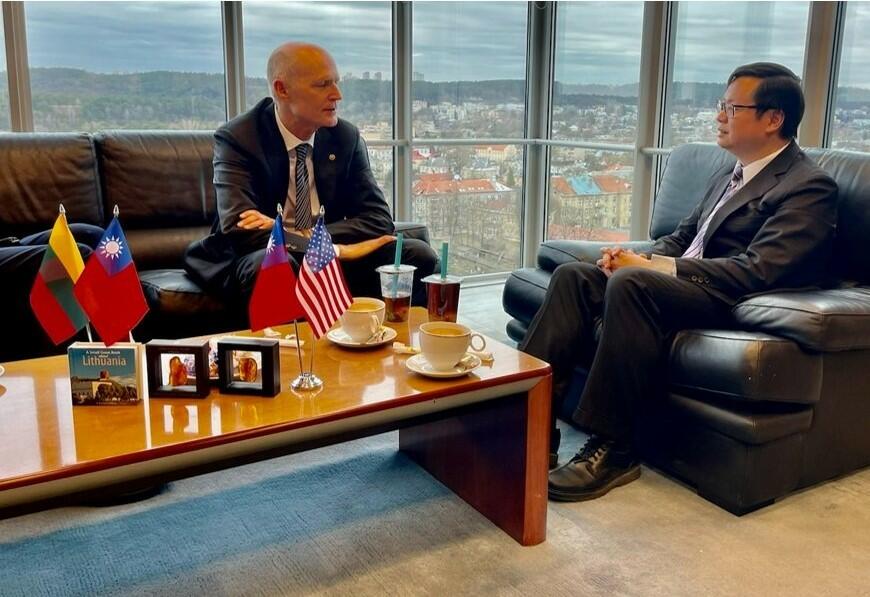
“Scott is scheduled to meet with President Tsai Ying-wen and Premier Su Tseng-chang during his visit, the ministry said, adding that Minister of Foreign Affairs Joseph Wu was to host a banquet to welcome him,” regional sources detailed of his trip.
Meanwhile a top China official who overseas cross-strait affairs on Thursday declared that “reunification” of the island remains at the center of national rejuvenation plans.
According to The South China Post:
In an article published in People's Daily on Thursday, Liu Jieyi, head of the Taiwan Affairs Office, said one focus of the strategy would be preventing and resolving major risks and hidden dangers in the Taiwan Strait, creating a "favorable environment" for national rejuvenation. "Our growing comprehensive strength and significant institutional advantages continue to be transformed into efficiency in work related to Taiwan issues and push forward the process of national reunification," Liu said.
The concept of “peaceful reunification” with Taiwan has been pushed by Beijing for decades; however, Liu in his op-ed reiterated that China has never ruled out the option of using force.
Top Beijing officials have also recently gone on record to say that US stoking “independence forces” remains a bright red line which could result in war. But in light of the Russian invasion of Ukraine over the last more than four months, the Biden administration has been wary that President Xi could borrow from Putin’s playbook and stage a ‘shock’ blitz of the island.

Taiwan has condemned the fresh PLA military drills as a “provocation” and has put its forces on high alert, as China sends fighter jets across the strait as part of its typical messaging. Taiwan’s air force in turn scrambled fighters to intercept and warn off the Chinese aircraft.
Indonesian Artist Dhany Pramata Creates Comics That Most 80s-90s Kids Will Relate To

Indonesian artist Dhany Pramata creates comics that most 80s/90s kids will relate to. Dhany Pramata, an Indonesian artist reflects upon his childhood days with nostalgic and funny illustrations. I find some of these comics extremely relatable and if you are an 80s/90s kid, you might find them relatable too.











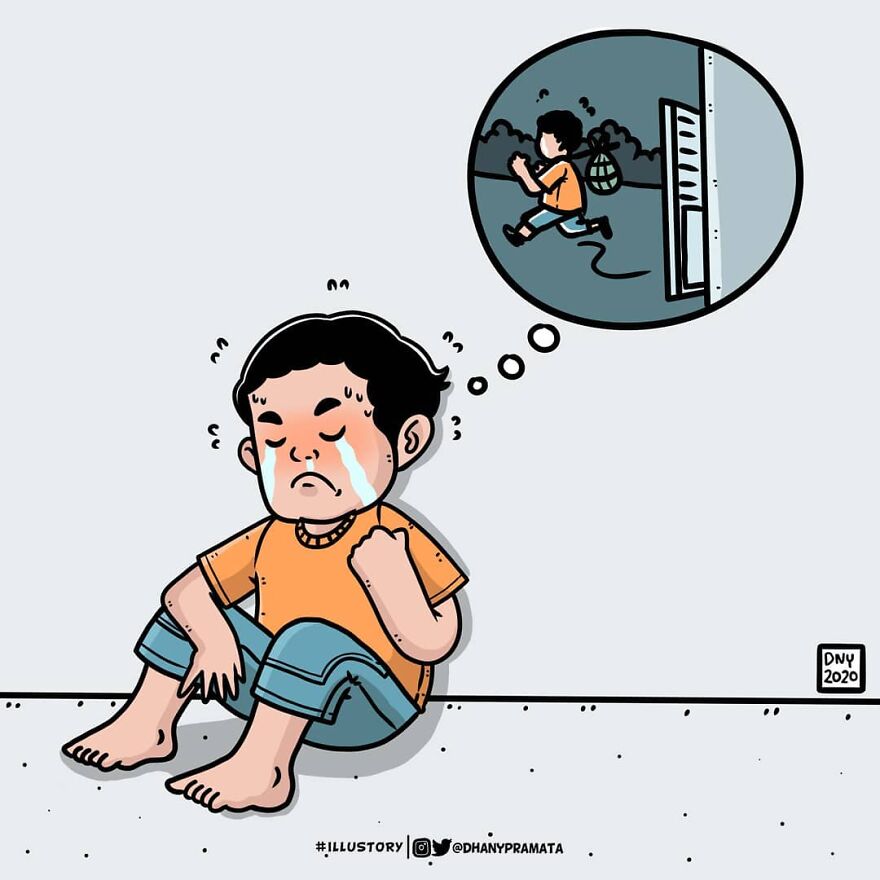
Don’t Make Assumptions
We have the tendency to make assumptions about everything. The problem with making assumptions is that we believe they are the truth. We could swear they are real. We make assumptions about what others are doing or thinking — we take it personally — then we blame them and react by sending emotional poison with our word. That is why whenever we make assumptions, we’re asking for problems. We make an assumption, we misunderstand, we take it personally, and we end up creating a whole big drama for nothing.
Making assumptions in our relationships is really asking for problems. Often we make the assumption that our partners know what we think and that we don’t have to say what we want. We assume they are going to do what we want, because they know us so well. If they don’t do what we assume they should do, we feel so hurt and say, “You should have known.”
Another example: You decide to get married, and you make the assumption that your partner sees marriage the same way that you do. Then you live together and you find out this is not true. This creates a lot of conflict, but you still don’t try to clarify your feelings about marriage. The husband comes home from work and the wife is mad, and the husband doesn’t know why. Maybe it’s because the wife made an assumption. Without telling him what she wants, she makes an assumption that he knows her so well, that he knows what she wants, as if he can read her mind. She gets so upset because he fails to meet her expectations. Making assumptions in relationships leads to a lot of fights, a lot of difficulties, a lot of misunderstandings with people we supposedly love.
In any kind of relationship we can make the assumption that others know what we think, and we don’t have to say what we want. They are going to do what we want because they know us so well. If they don’t do what we want, what we assume they should do, we feel hurt and think, “How could you do that? You should know.” Again, we make the assumption that the other person knows what we want. A whole drama is created because we make this assumption and then put more assumptions on top of it.
China rallies support for Kylin Linux in war on Windows • The Register
Good thing that I am running Limus Mint. -MM
China’s efforts to end its reliance on Microsoft Windows got a boost with the launch of the openKylin project.
The initiative aims to accelerate development of the country’s home-grown Kylin Linux distro by opening the project up to a broader community of developers, colleges, and universities to contribute code.
Launched in 2001, Kylin was based on a FreeBSD kernel and was intended for use in government and military offices, where Chinese authorities have repeatedly attempted to eliminate foreign operating systems.
In 2010, the operating system made the switch to the Linux kernel, and in 2014 an Ubuntu-based version of the OS was introduced after Canonical reached an agreement with Chinese authorities to develop the software.
The openKylin project appears to be the latest phase of that project, and is focused on version planning, platform development, and establishing a community charter. To date, the project has garnered support from nearly two dozen Chinese firms and institutions, including China’s Advanced Operating System Innovation Center.
These industry partners will contribute to several special interest groups to improve various aspects of the operating system over time. Examples include optimizations for the latest generation of Intel and AMD processors, where available; support for emerging RISC-V CPUs; development of an x86-to-RISC-V translation layer; and improvements to the Ubuntu Kylin User Interface (UKUI) window manager for tablet and convertible devices.
Simple Minds – Hypnotised
A great classic and great fun too!
China’s love-hate relationship with Microsoft
China’s efforts to rid itself of Redmond are by no means new. As far back as 2000, Chinese authorities ordered government offices to remove Windows in favor of Red Flag Linux.
However, in the case of Red Flag Linux, those efforts ultimately went nowhere after the project failed to catch on. The org was ultimately dissolved, and the team terminated in 2014. Despite its collapse, the project appears to have been rebooted, with a release slated to launch later this year.
This is a story that would repeat on a regular cadence, fueled by periodic spats between Uncle Sam and software vendors.
It’s safe to say the Chinese government has something of a love-hate relationship with Redmond. In 2013, Chinese authorities urged Microsoft to extend support for Windows XP, on which the country still relied heavily.
However, a year later, the Chinese government banned Windows 8 in much of the public sector, just months after Microsoft ended support for Windows XP.
Today, Microsoft controls roughly 85 percent of the desktop operating system market as of June 2022, according to Statcounter.
Some of this can be attributed to the launch of Windows 10 China Government Edition in 2017, which was developed in collaboration with the China Electronics Technology Group.
It doesn’t appear those efforts bought Microsoft’s American partners much in terms of goodwill, with Chinese authorities directing government agencies to throw out all foreign-made personal computers this spring.
Article HERE
Hiroshima – One Wish
Some nice 1980s jazz.
Australian bank Volt collapses urging 6000 customers to withdraw funds; 140 jobs lost
An Australian bank that collapsed has urged its 6000 customers to withdraw $100 million worth of deposits before it starts closing accounts from next Tuesday.
Volt, a digital bank called a neobank which was launched in 2017, announced it was handing back its banking licence to the regulator on Wednesday.
It was the first start up to gain the banking licence in January 2019 after the government sought to increase competition in the sector.
The bank’s demise means 140 staff have lost their jobs after the board made the decision to close the business. It said it failed to raise enough funds to support its plans to write mortgages.
What are the saddest things that have ever been discovered by archaeologists?
I think the findings of this recent genetic and archaeological study
are particularly sad, particularly because they shed away all the myths of “noble savages” and the wishful thinking of “war as a result of the power struggles of unequal civilizations”, and thus they reinforce the ever stronger conclusion that human societies have been brutal and insanely competitive since a very long time ago. It gives us a terrifying glimpse on what the “demographic changes”, “genetic replacements” and “ethnic shifts” that we often hear about as we study the history of a given place really meant back then, in the raw reality (of course this is not the whole story, but it’s surely an awful part of it).
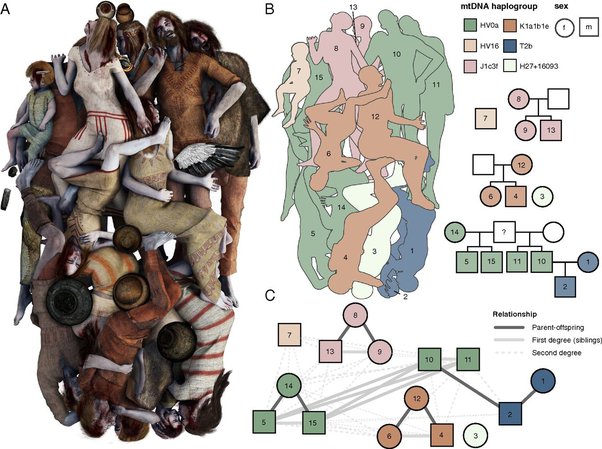
So what’s it about? Around 5,000 years ago, in Poland, 15 people were carefully buried together in a mass grave. Most of them belonged to the same extended family, part of a closely knit patrilineal clan, and there were four nuclear families related to each other. All of them had died by heavy blows onto their head, killed simultaneously in the same way.
The individuals who buried them certainly knew them pretty well, because they placed the bodies together with their closest relatives: women with their respective children, siblings close to each other, wives with their husbands.
The slaughtered victims are mainly adult women (one of them was 50–60 years old) and their young children, including children, teenagers and two babies, one aged 1.5 years, and the other 2.0–2.5 years (whose parents were not buried in the mass grave). They were certainly not a major “threat” to any neighboring tribe or clan.
Apart from those with familial relationships to each other, there was also one young woman who had no genetic relationship with anyone else in the extended family, but was buried close to a young man with no children, so she might’ve been his girlfriend or just married wife.

Intriguingly, with the exception of one male adult interred alongside his wife and son, no older men were found in the tomb, which points to several possibilities, but one of them is particularly sad to me: perhaps most of the adult men were away in their herding activities, in a hunting expedition, or maybe in a war campaign, and some rival tribe took advantage of that moment to wipe all the inhabitants of a small family farm/village. As the scientists concluded, “the nature of the injuries and the near absence of parry fractures (i.e. injuries sustained to the upper limbs) suggest that the individuals were captured and executed, rather than killed in hand-to-hand combat”. In other words, they had no chance to defend themselves and counter-attack, so they were murdered gratuitously. How shameful and cowardly is that!?
That would explain why, after such a violent death, the villagers were buried with such care. Maybe the men came back only to find their entire family, all the cherished ones they had left behind murdered cowardly in their absence, including the youngest among them.
Cruel though as that was, other archaeological evidences found to date suggest that such things were far from unusual and shocking in ancient warfare, even well before the stakes became much more complex, like conflicts over big empires and vast riches.
That family wasn’t even taken captive, enslaved or anything else. It was like they were “clearing the land” for their own people: nobody should be spared. The adult males probably survived just because they weren’t present when the slaughter took place, otherwise we wouldn’t expect the burial to have been made by someone who clearly took the care to make sure the dead relatives would have their eternal rest together with their most loved ones. I wonder what those males did after they saw what their enemies had done to their family, but I’ll assume it wasn’t pretty.
Unfortunately much of human history, even very recently, even now, is made up of really sad and very often appalling events like that one. What’s particularly worrisome is that, as archaeologists do their work, they increasingly find out that the despicable things that humans make when they’re in conflict were ubiquitous in all places, in all ages, in all sorts of different social and economic organizations. To me what that might tell us about humankind is what’s saddest in this story.
Wang Yi Talks About China’s Six Measures to Benefit Mekong in the Next Stage
Wang Yi Talks About China’s Six Measures to Benefit Mekong in the Next Stage
July 05, 2022 05:38 | Source: Xinhuanet Xinhua News Agency, Bagan, Myanmar, July 4 (Reporter Zhang Dongqiang) On July 4, 2022 local time, State Councilor and Foreign Minister Wang Yi announced when chairing the seventh Lancang-Mekong Cooperation Foreign Ministers' Meeting in Bagan, Myanmar, that China will We have launched six major Mekong-benefiting measures to share cooperation dividends with Mekong countries and increase development momentum. The first is to implement the "Million-Ten Thousand Action Plan for Lancang-Mekong Agricultural Cooperation". Carry out 100 agricultural technology extension projects for Mekong countries, train 1,000 leaders of agricultural prosperity, and build 10,000 hectares of demonstration fertile land. The second is the implementation of the "Lancang-Mekong Water Rejuvenation Program". Strengthen the sharing of hydrological information, build hydrological and meteorological forecasting stations, speed up the construction of photovoltaic water-lifting irrigation, rural water supply demonstration, and small watershed management demonstration construction, provide safety examinations for 20 reservoirs and dams, and ensure flood control, food, water supply and ecological security for 70 million people in the basin . The third is to implement the "Lancang-Mekong Digital Economy Cooperation Plan". Build cloud computing innovation centers in Mekong countries, promote digital TV R&D demonstrations, develop modern information technology systems, and carry out digital economy skills upgrading cooperation.。。。
Manipur: Kuki: Indians who claim to be Chinese, refuse to marry with Indian, and do not learn Hindi, Indian festivals
when i was in darjeeling, what i noticed, at least this was my perception the people overwhelmingly resembled more so chinese. and hardly at all indians to the south. -Kim
There are dozens of tribes in Manipur living peacefully with each other. That part of the world right next to China has got nothing to deal with India. The bloody English crusader occupied a large area surrounding India and later simply classified them as India. That is the problem China and many countries across the world are having after the crusader withdrawal. Anyway, Manipur people blocked India access to their region, and live independently from the India government. Actually there are other part of India with their own armies blocking access by the Indian government. If china behave like the Anglo-Saxon crusaders, China would have funded and armed those forces inside India to split the country. -Chua
Rodney Dangerfield Has Dom DeLuise Rolling On the Floor Laughing (1974)
This guy is great!
Iranian-flagged tanker moves to recoup cargo seized in Greece
An Iran-flag aframax tanker released from detention in Greece last month is now moving into position to take its seized cargo back. If it succeeds, the way will be open to resolve an acrimonious stand-off between Iran and Greece in which about 70 seafarers have been caught up in tit-for-tat tanker seizures over the past three months. According to vessel trackers and sources familiar with the issue, the 115,400-dwt Lana (built 2003) was towed last weekend from its former arrest location at Karystos in the Aegean, to the Piraeus anchorage.
Jeffrey Sachs: Covid-19 may have originated in US biolabs
An article in the Proceedings of the National Academy of Sciences calls for an independent investigation of information held by U.S.-based institutions that could shed light on the origins of Covid.
JEA: VT has published numerous articles pointing out that there is strong evidence that suggests that Covid 19 could have originated in US biolabs. Now we have enough evidence which confirms this theory.
IN AN ARTICLE published Thursday, economist Jeffrey Sachs called for an independent investigation of information held by U.S.-based institutions that could shed light on the origins of the Covid-19 pandemic. Writing in the Proceedings of the National Academy of Sciences, Sachs and his co-author, Neil Harrison, a Columbia University professor of molecular pharmacology and therapeutics, said that federal agencies and universities possess evidence that has not been adequately reviewed, including virus databases, biological samples, viral sequences, email communications, and laboratory notebooks.
Sachs and Harrison also highlighted a tantalizing scientific detail that may be an indication that SARS-CoV-2, the coronavirus that causes Covid-19, originated in a laboratory: a sequence of eight amino acids on a critical part of the virus’s spike protein that is identical to an amino acid sequence found in cells that line human airways.
Sachs and Harrison are hardly the first to suggest that SARS-CoV-2 might have been created in a lab. Since its genetic sequence was first published in February 2020, scientists have puzzled over the furin cleavage site, an area on the virus’s spike that allows it to be cleaved by a protein on the membrane of human cells and makes the coronavirus particularly dangerous to people.
Once split, the virus releases its genetic material into the cell and reproduces. While attaching to cells and spike cleavage is part of how all coronaviruses work, SARS-CoV-2 is the only one of its class, sarbecoviruses, that can use furin for the cleavage.
As with past discussion of a possible lab origin of SARS-CoV-2, this latest theory has already been met with considerable pushback. Even some scientists who are open to the idea that a lab accident could have sparked the pandemic remain unconvinced by the particular trail of evidence laid out by Sachs and Harrison.
The journal article offers a scientific road map for how this unusual sequence of amino acids could have made its way into the furin cleavage site, or FCS, of the virus. Sachs and Harrison acknowledge that the sequence could have arisen naturally. But they also lay out another possibility: that scientists might have purposefully inserted this particular string of amino acids into a bat coronavirus in the course of their work. They focus particularly on scientists who submitted an unfunded grant proposal to a division of the Defense Department called the Defense Advanced Research Projects Agency, or DARPA, laying out plans to insert a furin cleavage site into a bat coronavirus.
“We do not know whether the insertion of the FCS was the result of natural evolution — perhaps via a recombination event in an intermediate mammal or a human — or was the result of a deliberate introduction of the FCS into a SARS-like virus as part of a laboratory experiment,” Sachs and Harrison write. “We do know that the insertion of such FCS sequences into SARS-like viruses was a specific goal of work proposed by the EHA-WIV-UNC partnership within a 2018 grant proposal (“DEFUSE”) that was submitted to the US Defense Advanced Research Projects (DARPA).”
EHA is a reference to EcoHealth Alliance, a nonprofit research group based in New York City that has received more than $118 million in grants and contracts from federal agencies. WIV, or the Wuhan Institute of Virology, is a Chinese research organization that collaborated with EcoHealth Alliance in the past and was listed as a subcontractor on the DARPA grant. UNC is mentioned because Ralph Baric, a molecular biologist at the University of North Carolina, Chapel Hill, was to have conducted part of the work pitched to DARPA. The grant proposal touted Baric’s “two-decade track record of reverse engineering [coronavirus] and other virus spike proteins.”
The intent of the DARPA proposal was to prevent emerging pathogenic threats, but the work, if conducted, could have created a novel virus capable of infecting humans. “We will introduce appropriate human-specific cleavage sites and evaluate growth potential in [a type of mammalian cell commonly used in microbiology] and [human airway epithelial cell] cultures,” the proposal stated.
Several scientists interviewed about the DARPA proposal in September told The Intercept that scientists often begin research before seeking funding and thus that some of the experiments described in the proposal could have already been completed. But when asked about that possibility in an interview, Peter Daszak, the president of EcoHealth Alliance, rejected it: “The DARPA proposal was not funded. Therefore, the work was not done. Simple.”
A Rational Choice
s Sachs and Harrison note, the part of a protein on the cell membrane that shares its amino acid sequence with the bat coronavirus is critical for lung function. Known as an epithelial sodium channel-alpha, or ENaC-alpha, it is found in human airway cells, as well as in human kidneys and colons. Intriguingly, like SARS-CoV-2, ENaC-alpha, which facilitates the absorption of fluid in cells, is also activated by the unusual furin cleavage site. Harrison, a physiologist affiliated with Columbia’s Department of Molecular Pharmacology and Therapeutics, studies ion channels, the larger category to which ENaC-alpha belongs.
Other scientists have already pointed out the match between the amino acid series in the furin cleavage site of SARS-CoV-2 and the ENaC-alpha found in human airways. In 2020, a team from the biomedical company Nference suggested that the overlap between the virus and the sequence found in human lungs is part of the reason that Covid-19 is so damaging to the respiratory system. Those scientists described the sequence as having evolved naturally.
Sachs and Harrison, in contrast, suggest that researchers may have inserted the string of amino acids into a bat coronavirus precisely because of its known importance to lung function. “For a research team assessing the pandemic potential of SARS-related coronaviruses, the FCS of human ENaC — an FCS known to be efficiently cleaved by host furin present in the target location (epithelial cells) of an important target organ (lung), of the target organism (human) — might be a rational, if not obvious, choice of FCS to introduce into a virus in order to alter its infectivity, in line with other work performed previously,” they write.
Such a choice, they point out, would have been in keeping with another viral research project on which EcoHealth Alliance, the Wuhan Institute of Virology, and UNC’s Baric collaborated: a 2014 grant from the National Institute of Allergy and Infectious Diseases that involved increasing the transmissibility and pathogenicity of bat coronaviruses.
Growing List of Coincidences
The intriguing theory of viral engineering hinges on two observations: that the amino acid sequences match and that experts in both the ENaC-alpha furin cleavage site and the insertion of genetic sequences into bat coronaviruses happen to work at the same academic institution: the University of North Carolina, Chapel Hill.
Baric, whose work aims to prevent and create treatments for viral outbreaks, has previously inserted segments of DNA and RNA into viruses and created an infectious clone of SARS using his own patented “No See’m” method of inserting genetic materials without a trace. He has also collaborated on coronavirus research with scientists from a center for lung studies at UNC-Chapel Hill who are knowledgeable about ENaC-alpha. In one 2016 study, the scientists created a new virus using the spike of a bat coronavirus that had been isolated and characterized by the Wuhan Institute of Virology. The experiment found that the new virus “replicated efficiently” in human airway cells that were cultured in a lab.
In another paper, published a year earlier, Baric, along with the Wuhan Institute of Virology’s Shi Zhengli and a lung expert at UNC-Chapel Hill’s lung institute, described creating a hybrid virus using a SARS-like virus from a bat and a “mouse-adapted” coronavirus. The new virus caused mice to get sicker than those exposed to the original virus. The goal of these experiments was to prepare for the possibility that a virus might jump naturally from animals to humans, as SARS had in 2003. But even before the pandemic, the experiment drew criticism from other scientists, who were concerned because the researchers had created a virus that was able to spread in humans.
Sachs and Harrison note that the scientists who co-authored the DARPA grant proposal would have been aware of research on coronavirus furin cleavage sites, including one 2006 experiment in which a furin cleavage site was inserted into a coronavirus. “The research team would also have some familiarity with the FCS sequence and the FCS-dependent activation mechanism of human ENaC, which was extensively characterized at UNC,” they write.
Still, both the overlap in the amino acid sequence and the fact that experts in the furin cleavage site of the ENaC-alpha and insertion of genetic material into bat coronaviruses work at the same university could be coincidental, as Harrison and Sachs acknowledge. Some virologists, though, say that the coincidence strains credulity.
“Could be,” Richard Ebright, a molecular biologist at Rutgers University, wrote in an email to The Intercept when asked about the possibility that these things are both chance occurrences. “But the list of coincidences is getting verrrrrrrrrrry long.”
Ebright, a proponent of investigating the origin of SARS-CoV-2 and of investigating both natural-spillover and research-related-spillover, whom Harrison and Sachs thank “for helpful commentary on the manuscript,” spelled out some of the other Covid coincidences that he considers questionable, including its initial outbreak in a city that, well before 2019, had already been pegged as a biosafety risk. Ebright also noted Wuhan’s 1,000-mile distance from the nearest wild bats that carry the type of SARS-related coronaviruses that caused the pandemic. And he pointed to the particular coding of the amino acids in the furin cleavage site of SARS-CoV2.
“The sequence encoding the FCS of the pandemic virus contained two consecutive CGG arginine codons,” Ebright explained in his email. (A codon, or a combination of three nucleotides, supplies the genetic code for a single amino acid, though most amino acids can be represented by multiple different codons. Each nucleotide is represented by a letter — for RNA, either A, C, U, or G.) “This codon usage is unusual for a natural bat SARS-related coronaviruses (for which fewer than 1 in 30 arginine codons are CGG) but is optimal for humans (for which most arginine codons are CGG codons).”
Still, Ebright said that at first he didn’t see the identical amino acid sequences as particularly suspicious. “I had known for more than a year that there was a perfect match to an eight-amino acid sequence present in human ENaC. What I had not known was that the sequence was known to be a functional furin cleavage site and that it was a sequence extensively studied at UNC,” he said. “The crucial point that the ENaC sequence was a known functional site, not just that there happens to be a match to a protein that happens to be in humans. … That suddenly turned it from what I thought to be largely irrelevant to being a logical and obvious choice to proceed.”
Ralph Baric and the University of North Carolina did not immediately respond to requests for comment.
Name Calling
Other scientists dismiss the idea that the ENaC sequence might have been purposefully inserted into a coronavirus. Scientists who are already convinced that the new coronavirus emerged naturally are unlikely to be persuaded by Sachs and Harrison’s article, which appears in the opinion section of the esteemed journal. Over the past year, many scientists involved in the debate over the origins of the pandemic have settled into an increasingly acrimonious, coarse, and unyielding opposition.
Some proponents of the natural origin theory became particularly dismissive of those open to the possibility of a lab leak after the February release of two pre-print studies mapping the early spread of the virus at the Huanan market in Wuhan. Angela Rasmussen, one of a team of virologists who worked on the project, described it on Twitter as “dispositive evidence of a zoonotic origin” that will “drive those with personal interest in the lab leak hypothesis out of their goddam minds.” In another tweet, Rasmussen referred to proponents of the lab-leak theory as a “pack of ghouls, who through gullibility, stupidity, & conspiracist thinking have decided this is their thing despite zero expertise.”
Although the pre-prints had not been peer-reviewed and may have simply illustrated the spread of the virus rather than its original outbreak, the New York Times ran a front-page story about them that quoted an epidemiologist as saying that the origins debate “has been settled with a very high degree of evidence.” The story, which was announced by a push notification from the paper, also noted a lack of direct evidence for a lab leak.
Meanwhile, Kristian Andersen, another co-author of the pre-prints and a virologist at the well-regarded Scripps Research Institute, used the “poop” emoji to criticize a deeply researched article by Katherine Eban about EcoHealth Alliance. On Twitter, Andersen tarred Eban, New York Times columnist Zeynep Tufekci, and others reporting on biosafety issues that could have led to the release of SARS-CoV-2 as “deep in conspiracy theories” and on the other side of “a clear split” from journalists who dismiss the possibility of a lab origin, whom Andersen referred to as “science-based.”
Even some scientists who have been vocal about the possibility that the pandemic may have been sparked by research have expressed skepticism about the theory suggested by Harrison and Sachs. “The pandemic virus might have been genetically engineered. However, this could have been done in various ways not limited to the specific theory by Harrison and Sachs. I’m not convinced that their hypothesis is the most plausible one,” said Alina Chan, a scientist who laid out a number of possible routes for how the coronavirus might have emerged through research-related incidents in her recent book “Viral: The Search for the Origin of Covid-19.”
While she is open to the possibility that the furin cleavage site might have been purposefully inserted into the coronavirus, Chan said there was no reason to think that researchers would mine humans for such material. “These scientists literally had access to hundreds of SARS-like viruses and sequences,” said Chan, referring to the vast collection of coronaviruses from bats and other animals that researchers amassed at the Wuhan Institute of Virology. “There’s no need for them to go hunting inside the human protein catalogue to look for cleavage sites to put into viruses.”
Jack Nunberg, a virologist at the University of Montana, was also not immediately persuaded by the theory of engineering suggested by Sachs and Harrison. “It’s possible,” Nunberg said of the idea that the ENaC segment was inserted into a bat coronavirus as part of research designed to gauge the pandemic potential of a virus. “But I don’t find their evidence on ENaC compelling because furin cleavage sites have a lot of common amino acids, and therefore it may just have happened by chance.”
Others say that the article adds noteworthy information to the public conversation about the origins of the pandemic. “The defenders of the natural origin indicate that the virus on which this type of experiment could have been done — the backbone — has never been published and that specialists in the furin cleavage sites would have chosen a more commonly used furin cleavage site like RARR rather than PRRAR. The Proceedings of the National Academy of Sciences article contradicts this argument and indicates that specialists knew that the RRAR’SVAS site was efficiently cleaved by furin,” Etienne Decroly, director of virology research at the Aix-Marseille Université in France, wrote in an email to The Intercept.
Decroly added, “It is impossible to decide on the basis of the information currently available and it is urgent that the WHO Special Advisory Group for the Origins of Novel Pathogens investigate this question.”
On the suggestion of an investigation, Nunberg is in agreement. “You can’t argue with that,” he told The Intercept. “Who’s going to argue for burying one’s head in the sand?”
For their part, Sachs and Harrison emphasize that they’re not saying laboratory manipulation was involved in the emergence of the pandemic virus, only “that it could have been.” They also give a nod to other possibilities, including that an airborne virus might have infected a laboratory worker. Rather than argue that any of these conceivable scenarios happened, they present the clues of the matching amino acid sequences to argue for an independent and transparent scientific investigation of the U.S.-based evidence related to the origins of the virus.
Among the institutions that Sachs and Harrison list as possibly having “knowledge of the detailed activities that were underway in Wuhan and in the United States” are the National Institutes of Health; the Defense Threat Reduction Agency, which has provided grant funding to EcoHealth Alliance; the Department of Homeland Security; DARPA; the U.S. Agency for International Development, which funded the $200 million PREDICT program that catalogued potential pandemic viruses; and the University of California, Davis, which participated in that program.
The authors suggest that EcoHealth Alliance and UNC may have particularly important untapped resources. “The exact details of the fieldwork and laboratory work of the EHA-WIV-UNC partnership, and the engagement of other institutions in the US and China, has not been disclosed for independent analysis,” they write. “The precise nature of the experiments that were conducted, including the full array of viruses collected from the field and the subsequent sequencing and manipulation of those viruses, remains unknown.”
A Reversal
The publication in the prestigious Proceedings of the National Academy of Sciences marks a reversal of sorts for Sachs, the chair of the Lancet Covid-19 Commission who, in November 2020, appointed Daszak, the EcoHealth Alliance president, to lead a task force to investigate the origins of the pandemic. Earlier that year, Daszak had signed on to a public statement published in The Lancet on behalf of scientists who said they “condemn conspiracy theories suggesting that COVID-19 does not have a natural origin.”
Yet that early certainty about the pandemic’s origins — and the sense of shared civic responsibility among members of the Lancet task force — soon disintegrated. In February 2021, emails revealed that Daszak coordinated the public statement in The Lancet tamping down suspicions of a lab leak. And by June 2021, Sachs was expressing his openness to the possibility of a lab origin, writing that NIH-funded research at the Wuhan Institute of Virology “deserves scrutiny under the hypothesis of a laboratory-related release of the virus.” Three months later, he disbanded the task force that had been organized to “carefully scrutinize the origin of the SARS-CoV-2 virus” in the hopes of preventing future disease outbreaks, explaining that he had concerns that several members of the commission had conflicts of interest because of their ties to EcoHealth Alliance.
After leading the mainstream scientific inquiry into the origins of the pandemic, Sachs is now skewering it. “A steady trickle of disquieting information has cast a darkening cloud over the agency,” he and Harrison write of the NIH, going on to accuse the entire federal government of not doing enough to explore the possible role of its grantees in the emergence of SARS-CoV-2 and investigate “overlooked details” such as the matching amino acid sequences.
Noting that the NIH has insisted that “the pandemic virus could not have resulted from the work sponsored by” the agency, Sachs and Harrison write that “blanket denials from the NIH are no longer good enough.”
Arrested in Japan
I was arrested in Japan after only being there for 42 hours. I thought I was there for a wedding, turns out my traveling companion had other plans.
My travel companion had decided it would be a ‘fantastic idea’ to mail drugs to our hotel room (without my knowledge). When I got the call from the front desk that there was ‘luggage’ for us at the front desk, I assumed he had forgotten something downstairs. I was unaware of what was going on when he instead brought up a small envelope package. He opened it immediately, and it included drugs (I won’t go into specifics, but let’s just say they were the bad kind).
Five minutes later 10 Japanese police officers burst into the room and went through all our luggage, took our passports and put us both in handcuffs. The entire time I had a horrified look on my face, and kept saying ‘What is going on??’. No one answered me. *Interesting side note: when they plopped me down in front of an investigator who spoke English (while I was handcuffed to the chair), she asked if I had any questions for her. My brain was in such a state of shock all I could think to ask was “Do you think I’ll miss the wedding?” She answered “Yes, I think you will”. Then I started crying.
I was unable to contact any family or friends after being arrested. This is applied to everyone, no matter what the charge.
Then began the worst travel experience of my life. And it lasted for 35 days. I will make a long story short in saying that it took 35 days, 2 high powered lawyers from Tokyo and becoming semi-fluent in Japanese to be released without charge. The same cannot be said for my traveling companion, who ended up in jail for much, much longer.
The biggest takeaway here (this should be a no-brainer, but just in case!): never, EVER EVER bring, or smuggle, or mail, or otherwise bring drugs into a foreign country!!! Research the country you are going to be visiting!!
Although I had nothing to do with this case of smuggling, it still took a very long time for me to prove I was innocent. And believe you me, they left absolutely no stone unturned in their investigation. Japan has a 99.5% conviction rate. The fact that I was released without charge further proved my innocence.
I lost 25 lbs, and when I returned home I lost most of my hair from the sudden weight loss and stress.
I have not let this hinder my love of travel though! Not even a year after the incident, I went back to Japan (without the companion) to explore what I did not get to experience the first time. I will keep traveling till the day I die, and I will tell this story to my grandchildren, along with all the other amazing stories I have collected along the way 🙂
Here is a picture of me enjoying tea ceremony at Hikone castle near Osaka (with no thoughts of the jail cell I spent so much time in)

Edit: this is my most prized document, received from my lawyers after I returned home – my Notice of non-prosecution! I started planning my return trip to Japan the day I received this.
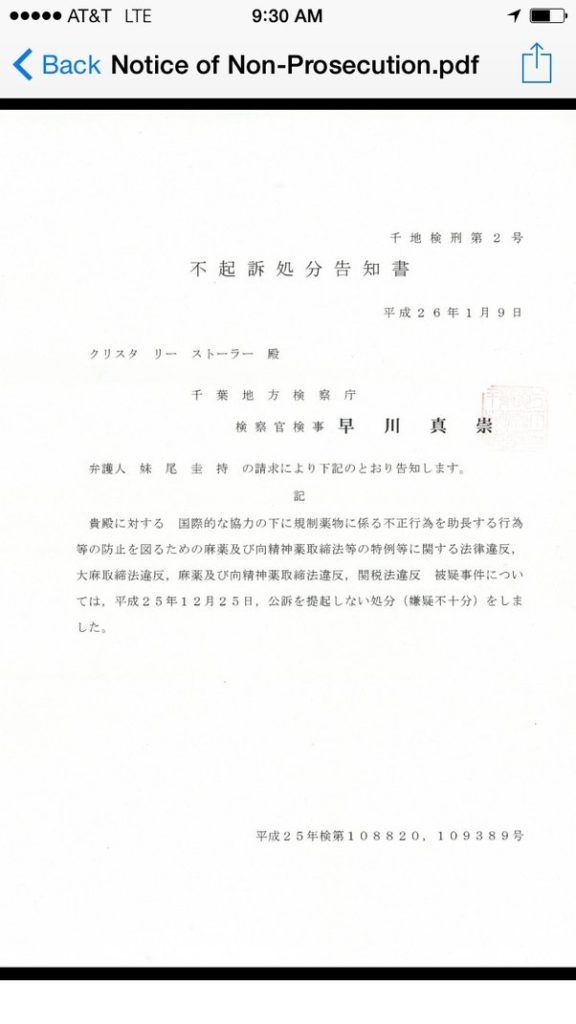
Edit #2/Update: So many many thanks to Graham Healey for his wonderful translation of my document above – my first translation was a badly computer generated version.
Chiba District Prosecutor’s Office Number 2 Notice of Non-prosecution 9 January 2014 [To] Ms Krysta Lee Storer [From] Public Prosecutor [name removed], Office of Public Prosecutions, Chiba District At the request of Defence Attorney [name removed], I [hereby] notify you as follows: With regard to the matter of your having been detained on suspicion of (a) infringement of the Law Relating to Special Cases Under the Control of Narcotic and Psychotropic Drugs Law Aimed at the Prevention of Actions Abetting Illegal Actions relating to Controlled Drugs under International Cooperation, (b) infringement of the Cannabis Control Law, (c) infringement of the Narcotic and Psychotropic Drugs Control Law and (d) infringement of the Tax Law, I disposed of this matter on 25 December 2013 with a decision not to initiate a prosecution because of insufficient evidence.
I was released on Christmas Day, 2013. Best Christmas Ever.
If you are interested in reading more about my experience in jail, please see my Quora space: Krysta’s Misadventures. Thank you for reading!
Falco – Rock Me Amadeus (Official Video), Full HD (Digitally Remastered and Upscaled)
Another great BLAST FROM THE PAST!
The reign of Pertinax
The reign of Pertinax was perhaps the biggest “oh sh%t” moment in Roman history thus far. It’s a ridiculous saga that’s almost hard to believe.
Let me set the stage. You all know who Commodus was right? The Emperor in the movie “Gladiator”?

Well, Commodus was a bad Emperor, perhaps even the worst Emperor. He drove the Empire to bankruptcy by throwing near-constant gladiator games where he himself fought as a gladiator and was the main attraction. Sometimes he showed off bow skills and killed animals, other times he killed people.
His reign saw famine, economic decline, inflation, and political instability. Eventually, he was assassinated and replaced as usually happens with bad Emperors.
The new Emperor was the opposite of Commodus. His name was Pertinax and he was an old wise politician who actually cared about the Empire.
Pertinax took over and immediately realized how screwed Rome was. Simply put, the treasury was nearing empty and Rome’s spending habits were out of control.

Now when an Emperor took the throne it was customary to give a “donative” (basically a bonus) to the Praetorian Guard. This was a huge sum of money- something like hundreds of millions of dollars in modern money.
Pertinax realized that the Empire lacked the funds for a large donative. So, Pertinax paid out a smaller donative than was customary.
The Praetorians were livid and brought their case to Pertinax, demanding more money. Pertinax said no and moved on with his reign.
The Praetorians responded like this.
- They killed Pertinax with no heir in place.
- The Senate was upset but afraid and couldn’t appoint a new Emperor
- The Praetorians decided to give the throne to whoever could pay them the most. There was a bidding war between 2 rich men named Sulpicianus and Didius Julianus. Didius promised 25,000 sesterces to every Praetorian and thus won the auction for the throne.
Think about how INSANE this is. The throne of the largest Empire on earth was literally auctioned off so that the bodyguards could cash in a big payday. Can you imagine the Secret Service auctioning off the US Presidency after murdering the prior President over the size of their bonus?
The Praetorians were pleased with themselves but nobody else was. This action was so far over the line it’s hard to fathom. Romans were shocked, dismayed, and horrified by what had happened.
When Didius Took the throne he went to the Senate and reminded them he had served with them for years and was actually a good choice. Nobody in the Senate house said a word and moved a muscle- Didius would find no friends there.
So Didius got his throne and the support of the Praetorians. The Senate and People of Rome hated him but oh well.
Off on the Rhine River at this time was Septimius Severus- commander of the Rhine legions.

Now the Rhine legions saw the most action and they were hardened warriors- serious badasses. The Rhine Legions were the crack troops of the Roman Empire at this time.
When Septimius heard about Didius buying the throne and demanding his submission he laughed hard, had his men proclaim him Emperor, and marched to Rome.
The Praetorians tried to march out and put up a fight but they were not suicidal. They realized they would be slaughtered and just opened the gates to Severus.
Didius was then killed without ceremony. His last words were
“But what evil have I done? Whom have I killed”
The Senate and People of Rome proclaimed Septimius their Emperor and damned the memory of Didius Julianus.
Gotta feel bad for the guy- he really wasn’t a bad dude.
Septimius then got rid of the Praetorian Guard…. kinda. Every member of the guard was stripped of their rank and position and exiled from Rome itself. Then Septimius formed a new Praetorian Guard made up of his veterans from the Rhine legions.
Septimius honored Pertinax for various logical reasons.
- He was the rightful Emperor that had been viciously and illegally murdered by greedy Praetorian Guards. This was Septimius’s justification for marching on Rome after all.
- Pertinax was a decent Emperor who had the right idea. He just lacked political IQ.
Septimius was politically savvy. He was trying to frame himself as the savior of Rome, who had marched on the city to overthrow a tyrant and the murderers that had killed the rightful Emperor.
Was this true?
Yes- mostly it was. Septimius would actually go down as one of the better Emperors in Roman history and the Praetorians really were murderous thugs.
|
“But I don’t want to go among mad people,” Alice remarked. – Lewis Carroll’s “Alice’s Adventures in Wonderland” We are living in a world where the degree of disinformation and outright lying has reached such a state of affairs that, possibly for the first time ever, we see the majority of the western world starting to question their own and surrounding level of sanity. The increasing frenzied distrust in everything “authoritative” mixed with the desperate incredulity that “everybody couldn’t possibly be in on it!” is slowly rocking many back and forth into a tighter and tighter straight jacket. “Question everything” has become the new motto, but are we capable of answering those questions? Presently the answer is a resounding no. The social behaviourist sick joke of having made everyone obsessed with toilet paper of all things during the start of what was believed to be a time of crisis, is an example of how much control they have over that red button labelled “commence initiation of level 4 mass panic”. And can the people be blamed? After all, if we are being lied to, how can we possibly rally together and point the finger at the root of this tyranny, aren’t we at the point where it is everywhere? As Goebbels infamously stated, “If you tell a lie big enough and keep repeating it, people will eventually come to believe it. The lie can be maintained only for such time as the State can shield the people from the political, economic and/or military consequences of the lie. It thus becomes vitally important for the State to use all of its powers to repress dissent, for the truth is the mortal enemy of the lie, and thus by extension, the truth is the greatest enemy of the State [under fascism].” And here we find ourselves today, at the brink of fascism. However, we have to first agree to forfeit our civil rights as a collective before fascism can completely dominate. That is, the big lie can only succeed if the majority fails to call it out, for if the majority were to recognise it for what it is, it would truly hold no power. The Battle for Your Mind“Politicians, Priests, and psychiatrists often face the same problem: how to find the most rapid and permanent means of changing a man’s belief…The problem of the doctor and his nervously ill patient, and that of the religious leader who sets out to gain and hold new converts, has now become the problem of whole groups of nations, who wish not only to confirm certain political beliefs within their boundaries, but to proselytize the outside world.” – William Sargant “Battle of the Mind” It had been commonly thought in the past, and not without basis, that tyranny could only exist on the condition that the people were kept illiterate and ignorant of their oppression. To recognise that one was “oppressed” meant they must first have an idea of what was “freedom”, and if one were allowed the “privilege” to learn how to read, this discovery was inevitable. If education of the masses could turn the majority of a population literate, it was thought that the higher ideas, the sort of “dangerous ideas” that Mustapha Mond for instance expresses in “The Brave New World”, would quickly organise the masses and revolution against their “controllers” would be inevitable. In other words, knowledge is freedom, and you cannot enslave those who learn how to “think”. However, it hasn’t exactly played out that way has it? The greater majority of us are free to read whatever we wish to, in terms of the once “forbidden books”, such as those listed by The Index Librorum Prohibitorum[1]. We can read any of the writings that were banned in “The Brave New World”, notably the works of Shakespeare which were named as absolutely dangerous forms of “knowledge”. We are now very much free to “educate” ourselves on the very “ideas” that were recognised by tyrants of the past as the “antidote” to a life of slavery. And yet, today, the majority choose not to… It is recognised, albeit superficially, that who controls the past, controls the present and thereby the future. George Orwell’s book “1984”, hammers this as the essential feature that allows the Big Brother apparatus to maintain absolute control over fear, perception and loyalty to the Party cause, and yet despite its popularity, there still remains a lack of interest in actually informing oneself about the past. What does it matter anyway, if the past is controlled and rewritten to suit the present? As the Big Brother interrogator O’Brien states to Winston, “We, the Party, control all records, and we control all memories. Then we control the past, do we not? [And thus, are free to rewrite it as we choose…]” Of course, we are not in the same situation as Winston…we are much better off. We can study and learn about the “past” if we so desire, unfortunately, it is a choice that many take for granted. In fact, many are probably not fully aware that presently there is a battle waging for who will “control the past” in a manner that is closely resembling a form of “memory wipe”. *** William Sargant was a British psychiatrist and, one could say, effectively the Father of “mind control” in the West, with connections to British Intelligence and the Tavistock Institute, which would influence the CIA and American military via the program MK Ultra. Sargant was also an advisor for Ewen Cameron’s LSD “blank slate” work at McGill University, funded by the CIA. Sargant accounts for his reason in studying and using forms of “mind control” on his patients, which were primarily British soldiers that were sent back from the battlefield during WWII with various forms of “psychosis”, as the only way to rehabilitate extreme forms of PTSD. The other reason, was because the Soviets had apparently become “experts” in the field, and out of a need for national security, the British would thus in turn have to become experts as well…as a matter of self-defence of course. The work of Ivan Pavlov, a Russian physiologist, had succeeded in producing some disturbingly interesting insights into four primary forms of nervous systems in dogs, that were combinations of inhibitory and excitatory temperaments; “strong excitatory”, “balanced”, “passive” and “calm imperturbable”. Pavlov found that depending on the category of nervous system temperament the dog had, this in turn would dictate the form of “conditioning” that would work best to “reprogram behaviour”. The relevance to “human conditioning” was not lost on anyone. It was feared in the West, that such techniques would not only be used against their soldiers to invoke free-flowing uninhibited confessions to the enemy but that these soldiers could be sent back to their home countries, as zombified assassins and spies that could be set off with a simple code word. At least, these were the thriller stories and movies that were pumped into the population. How horrific indeed! That the enemy could apparently enter what was thought the only sacred ground to be our own…our very “minds”! However, for those who were actually leading the field in mind control research, such as William Sargant, it was understood that this was not exactly how mind control worked. For one thing, the issue of “free will” was getting in the way. No matter the length or degree of electro-shock, insulin “therapy”, tranquilizer cocktails, induced comas, sleep deprivation, starvation etc induced, it was discovered that if the subject had a “strong conviction” and “strong belief” in something, this could not be simply erased, it could not be written over with any arbitrary thing. Rather, the subject would have to have the illusion that their “conditioning” was in fact a “choice”. This was an extremely challenging task, and long term conversions (months to years) were rare. However, Sargant saw an opening. It was understood that one could not create a new individual from scratch, however, with the right conditioning that was meant to lead to a physical breakdown using abnormal stress (effectively a reboot of the nervous system), one could increase the “suggestibility” markedly in their subjects. Sargant wrote in his “Battle of the Mind”: “Pavlov’s clinical descriptions of the ‘experimental neuroses’ which he could induce in dogs proved, in fact, to have a close correspondence with those war-neuroses which we were investigating at the time.” In addition, Sargant found that a falsely implanted memory could help induce abnormal stress leading to emotional exhaustion and physical breakdown to invoke “suggestibility”. That is, one didn’t even need to have a “real stress” but an “imagined stress” would work just as effectively. Sargant goes on to state in his book: “It is not surprising that the ordinary person, in general, is much more easily indoctrinated than the abnormal…A person is considered ‘ordinary’ or ‘normal’ by the community simply because he accepts most of its social standards and behavioural patterns; which means, in fact, that he is susceptible to suggestion and has been persuaded to go with the majority on most ordinary or extraordinary occasions.” Sargant then goes over the phenomenon of the London Blitz, which was an eight month period of heavy bombing of London during WWII. During this period, in order to cope and stay “sane”, people rapidly became accustomed to the idea that their neighbours could be and were buried alive in bombed houses around them. The thought was “If I can’t do anything about it what use is it that I trouble myself over it?” The best “coping” was thus found to be those who accepted the new “environment” and just focused on “surviving”, and did not try to resist it. Sargant remarks that it is this “adaptability” to a changing environment which is part of the “survival” instinct and is very strong in the “healthy” and “normal” individual who can learn to cope and thus continues to be “functional” despite an ever changing environment. It was thus our deeply programmed “survival instinct” that was found to be the key to the suggestibility of our minds. That the best “survivors” made for the best “brain-washing” in a sense. Sargant quotes Hecker’s work, who was studying the dancing mania phenomenon that occurred during the Black Death, where Hecker observed that heightened suggestibility had the capability to cause a person to “embrace with equal force, reason and folly, good and evil, diminish the praise of virtue as well as the criminality of vice.” And that such a state of mind was likened to the first efforts of the infant mind “this instinct of imitation when it exists in its highest degree, is also united a loss of all power over the will, which occurs as soon as the impression on the senses has become firmly established, producing a condition like that of small animals when they are fascinated by the look of a serpent.” I wonder if Sargant imagined himself the serpent… Sargant does finally admit: “This does not mean that all persons can be genuinely indoctrinated by such means. Some will give only temporary submission to the demands made on them, and fight again when strength of body and mind returns. Others are saved by the supervention of madness. Or the will to resist may give way, but not the intellect itself.” But he comforts himself as a response to this stubborn resistance that “As mentioned in a previous context, the stake, the gallows, the firing squad, the prison, or the madhouse, are usually available for the failures.” How to Resist the Deconstruction of Your Mind“He whom the gods wish to destroy, they first of all drive mad.” – Henry Wadsworth Longfellow “The Masque of Pandora” For those who have not seen the 1944 psychological thriller “Gaslight” directed by George Cukor, I would highly recommend you do so since there is an invaluable lesson contained within, that is especially applicable to what I suspect many of us are experiencing nowadays. The story starts with a 14 year old Paula (played by Ingrid Bergman) who is being taken to Italy after her Aunt Alice Alquist, a famous opera singer and caretaker of Paula, is found murdered in her home in London. Paula is the one who found the body, and horror stricken is never her old self again. Her Aunt was the only family Paula had left in her life. The decision is made to send her away from London to Italy to continue her studies to become a world-renowned opera singer like her Aunt Alice. Years go by, Paula lives a very sheltered life and a heavy somberness is always present within her, she can never seem to feel any kind of happiness. During her singing studies she meets a mysterious man (her piano accompanist during her lessons) and falls deeply in love with him. However, she knows hardly anything about the man named Gregory. Paula agrees to marry Gregory after a two week romance and is quickly convinced to move back into her Aunt’s house in London that was left abandoned all these years. As soon as she enters the house, the haunting of the night of the murder revisits her and she is consumed with panic and fear. Gregory tries to calm her and talks about the house needing just a little bit of air and sun, and then Paula comes across a letter written to her Aunt from a Sergis Bauer which confirms that he was in contact with Alice just a few days before her murder. At this finding, Gregory becomes bizarrely agitated and grabs the letter from Paula. He quickly tries to justify his anger blaming the letter for upsetting her. Gregory then decides to lock all of her Aunt’s belongings in the attic, to apparently spare Paula any further anguish. It is at this point that Gregory starts to change his behaviour dramatically. Always under the pretext for “Paula’s sake”, everything that is considered “upsetting” to Paula must be removed from her presence. And thus quickly the house is turned into a form of prison. Paula is told it is for her best not to leave the house unaccompanied, not to have visitors and that self-isolation is the best remedy for her “anxieties” which are getting worst. Paula is never strictly forbidden at the beginning but rather is told that she should obey these restrictions for her own good. Before a walk, he gives as a gift a beautiful heirloom brooch that belonged to his mother. Because the pin needs replacing, he instructs Paula to keep it in her handbag, and then says rather out of context, “Don’t forget where you put it now Paula, I don’t want you losing it.” Paula remarks thinking the warning absurd, “Of course I won’t forget!” When they return from their walk, Gregory asks for the brooch, Paula searches in her handbag but it is not there. It continues on like this, with Gregory giving warnings and reminders, seemingly to help Paula with her “forgetfulness” and “anxieties”. Paula starts to question her own judgement and sanity as these events become more and more frequent. She has no one else to talk to but Gregory, who is the only witness to these apparent mishaps. It gets to a point where completely nonsensical behaviour is being attributed to Paula by Gregory. A painting is found missing on the wall one night. Gregory talks to Paula like she is a 5 year child and asks her to put it back. Paula insists she does not know who took it down. After her persistent passionate insistence that it was not her, she walks up the stairs almost like she were in a dream state and pulls the painting from behind a statue. Gregory asks why she lied, but Paula insists that she only thought to look there because that is where it was found the last two times this occurred. For weeks now, Paula thinks she has been seeing things, the gas lights of the house dimming for no reason, she also hears footsteps above her bedroom. No one else seems to take notice. Paula is also told by Gregory that he found out that her mother, who passed away when she was very young, had actually gone insane and died in an asylum. Despite Paula being reduced to a condition of an ongoing stupor, she decides one night to make a stand and regain control over her life. Paula is invited, by one of her Aunt Alice’s close friends Lady Dalroy, to attend a high society evening with musical performances. Recall that Paula’s life gravitated around music before her encounter with Gregory. Music was her life. Paula gets magnificently dressed up for the evening and on her way out tells Gregory that she is going to this event. Gregory tries to convince her that she is not well enough to attend such a social gathering, when Paula calmly insists that she is going and that this woman was a dear friend of her Aunt, Gregory answers that he refuses to accompany her (in those days that was a big deal). Paula accepts this and walks with a solid dignity, undeterred towards the horse carriage. In a very telling scene, Gregory is left momentarily by himself and panic stricken, his eyes bulging he snaps his cigar case shut and runs after Paula. He laughingly calls to her, “Paula, you did not think I was serious? I had no idea that this party meant so much to you. Wait, I will get ready.” As he is getting ready in front of the mirror, a devilish smirk appears. Paula and Gregory show up to Lady Dalroy’s house late, the pianist is in the middle of the 1st movement of Beethoven’s Piano Sonata #8 in C minor. They quickly are escorted to two empty seats. Paula is immediately immersed in the piece, and Gregory can see his control is slipping. After only a few minutes, he goes to look at his pocket watch but it is not in his pocket. He whispers into Paula’s ear, “My watch is missing”. Immediately, Paula looks like she is going to be sick. Gregory takes her handbag and Paula looks in horror as he pulls out his pocket watch, insinuating that Paula had put it there. She immediately starts losing control and has a very public emotional breakdown. Gregory takes her away, as he remarks to Lady Dalroy that this is why he didn’t want Paula coming in the first place. When they arrive home, Paula has by now completely succumbed to the thought that she is indeed completely insane. Gregory says that it would be best if they go away somewhere for an indefinite period of time. We later find out that Gregory is intending on committing her to an asylum. Paula agrees to leave London with Gregory and leaves her fate entirely in his hands. In the case of Paula it is clear. She has been suspecting that Gregory has something to do with her “situation” but he has very artfully created an environment where Paula herself doubts whether this is a matter of unfathomable villainy or whether she is indeed going mad. It is rather because she is not mad that she doubts herself, because there is seemingly no reason for why Gregory would put so much time and energy into making it look like she were mad, or at least so it first appears. But what if the purpose to her believing in her madness was simply a matter of who is in control? Paula almost succeeds in gaining the upper-hand in this power-struggle, the evening she decided to go out on her own no matter what Gregory insisted was in her best interest. If she would have held her ground at Lady Dalroy’s house and simply replied, “I have no idea why your stupid watch ended up in my handbag and I could care less. Now stop interrupting this performance, you are making a scene!” Gregory’s spell would have been broken as simple as that. If he were to complain to others about the situation, they would also respond, “Who cares man, why are you so obsessed about your damn watch?” We find ourselves today in a very similar situation to Paula. And the voice of Gregory is represented by the narrative of false news and the apocalyptic social behaviourist programming in our forms of entertainment. The things most people voluntarily subject themselves to on a daily, if not hourly, basis. Socially conditioning them, like a pack of salivating Pavlovian dogs, to think it is just a matter of time before the world ends and with a ring of their master’s bell…be at each other’s throats. Paula ends up being saved in the end by a man named Joseph Cotten (a detective), who took notice and quickly discerned that something was amiss. In the end Gregory is arrested. It is revealed that Gregory is in fact Sergis Bauer. That he killed Alice Alquist and that he has returned to the scene of the crime after all these years in search for the famous jewels of the opera singer. The jewels were in fact rather worthless from the standpoint that they were too famous to be sold, however, Gregory never intended on selling these jewels but rather had become obsessed with the desire to merely possess them. That is, it is Gregory who has been entirely mad all this time. A Gregory is absolutely dangerous. He would have been the end of Paula if nothing had intervened. However, the power that Gregory held was conditional to the degree that Paula allowed it to control her. Paula’s extreme deconstruction was thus entirely dependent on her choice to let the voice of Gregory in. That is, a Gregory is only dangerous if we allow ourselves to sleep walk into the nightmare he has constructed for us.
“When I use a word,” Humpty Dumpty said in rather a scornful tone, “it means just what I choose it to mean — neither more nor less.” “The question is,” said Alice, “whether you can make words mean so many different things.” “The question is,” said Humpty Dumpty, “which is to be master – – that’s all.” – Lewis Carroll’s “Through the Looking Glass” |
American ICBM Test Rocket Exploded Seconds After Launch, Briefly Setting Fire To California Base
A late night ICBM missile test in California ended in disaster, as it exploded just seconds after lift-off on Wednesday.
Officials with the Vandenberg Space Force Base in Lompoc, California confirmed that “The Minotaur II space launch vehicle exploded approximately 11 seconds after launching off the test pad at 11:01 p.m. local time, Vandenberg,” which was announced Thursday morning.
The incident resulted in a fire on base, though officials noted that debris from the blast didn’t stray outside of the “immediate vicinity” of the launch bad. The local Vandenberg Fire Department responded and was able to put out the fire before it threatened other areas of the base. No injuries were reported.
A cause of the failed test was not immediately clear, and it’s under investigation. Local reports, citing military press releases, say the test was originally slated for Thursday morning but was moved up to late Wednesday night for unknown reasons.
“The military base was testing the U.S. Air Force’s new missile rocket, which is expected to be used with the future LGM-35A Sentinel intercontinental ballistic missile,” one area report details.
“Both are being developed by the Air Force’s Nuclear Weapons Center to will replace the aging Minuteman missiles that have previously been tested at the Central Coast base, located near Lompoc,” the reported added.
According to a defense journal the launch was intended to demonstrate the vehicle’s “preliminary design concepts and relevant payload technologies in operationally realistic environments,” based on an Air Force Nuclear Weapons Center statement.
The precious comments from this article…

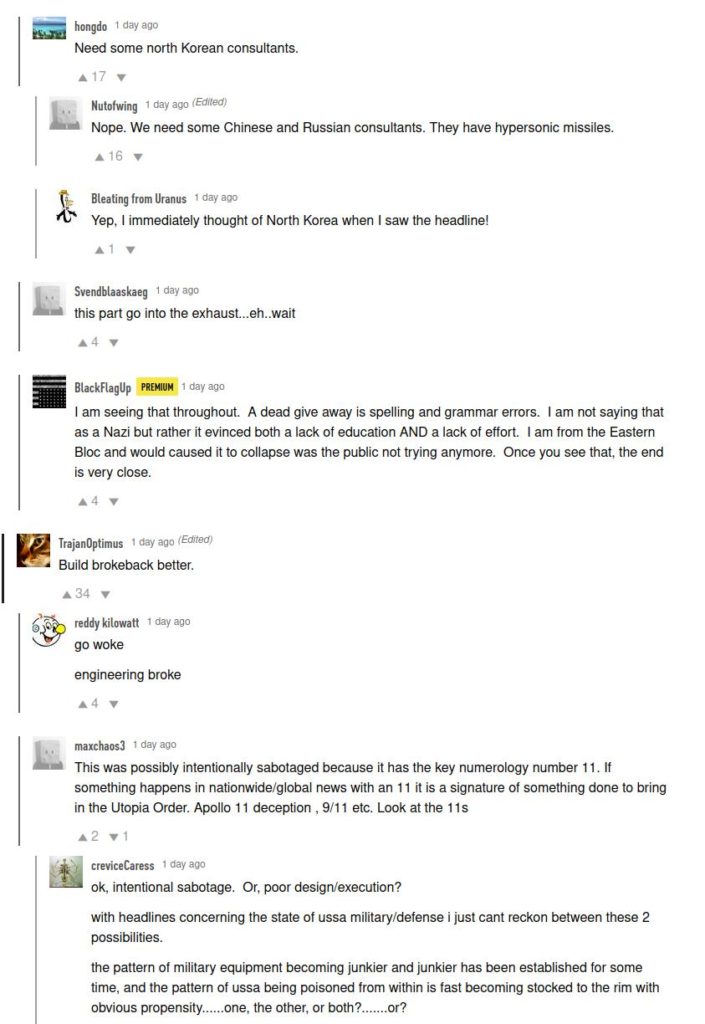
The biggest shame for ancient Rome was the loss of the “Eagle Standard”
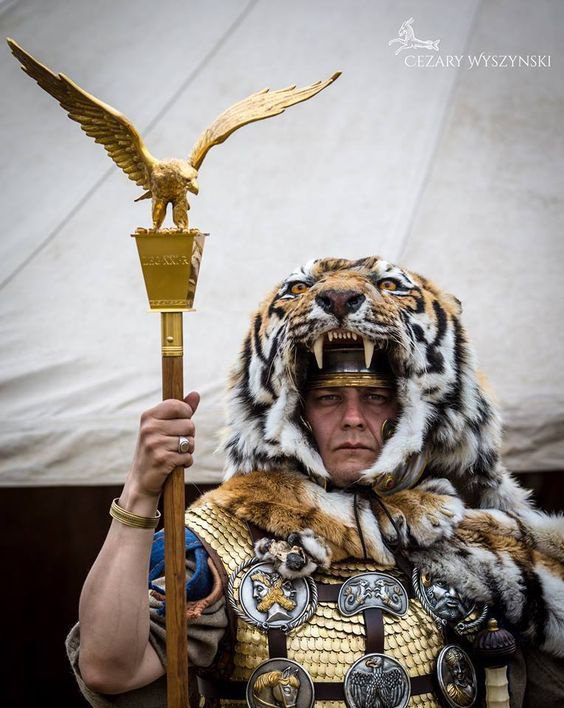
Every legion had an eagle standard and it was the embodiment of Roman power and might. The Roman legions and Roman citizens nearly worshipped the standard.
When Crassus marched off to fight the Parthians he lost the standards. This was a horrible humiliation for Rome. To lose so many standards to an enemy was an insult to Rome itself.
Decades later Augustus became the first emperor of Rome.
Augustus wanted a big win against the Parthians and he sent his right hand man and greatest general of the age Agrippa to deliver.
So what did Agrippa and Augustus want? To conquer Parthia? To take the capital? No
They merely wanted the legion standards back.
Agrippa did what Agrippa does and found a way to negotiate for the standards back.
When they were returned to Rome it was a party. The Romans flooded the streets and partied like Rome had won some grand victory. To them getting the standards back was a victory.
Losing a battle was never great- but losing the standards was a true defeat. As long as the eagle stood strong Rome stood strong.
The Shot President
On October 14, 1912, Theodore Roosevelt was planning on giving a speech.
He started by saying, “Friends, I shall ask you to be as quiet as possible.”
He was then shot.
“I don’t know whether you fully understand that I have just been shot,” Roosevelt continues.
Much to the crowd’s shock, Roosevelt unbuttons his bloodstained shirt.

“It takes more than that to kill a bull moose,” Roosevelt assures the crowd.
Roosevelt takes his speech papers out of his coat pocket. There was a bullet hole straight through all fifty pages. The papers had saved his life.
Luckily for his speech, Roosevelt had a self-claimed photographic memory. He went on to give a ninety minute speech even though his aides insisted that he go to a hospital. Only with the speech completed did he agree to visit the hospital.
He was fifty-three at the time.
What a bad-ass.
Roosevelt’s face later that day:

Why Are Girls Attracted To Assholes?
From elsewhere. I did not write this piece. -MM
The first time I fell in love, I was 13. I wanted her to like me back so much I was prepared to do anything. I did my best to be nice, kind and giving – but none of it worked.
So I spent 2 years watching my first crush date asshole after asshole. She’d fall for the cheaters, the jerks and the guys who disrespected her. Every time, I was the one she cried to when things went wrong for the Nth time.
I didn’t get it.
Here I was, giving her so much and ready to give more; we’d be great together… But she kept choosing them over me. She wasn’t the only one; over the years, many of the girls I liked ended up with assholes.
So when I finally decided to get with women, the first thing I wanted to know was, “why do girls like assholes so much?” – and whether I had to become one to be loved.
Here are the answers to those questions.
1. Girls Like Assholes because They’re Strong
Assholes have tough, dominant personalities. They’re not afraid to assert themselves over other people – in fact, they rarely show fear at all. They take what they want from life and don’t care what anyone thinks of them.
This is incredibly attractive because girls want to be with men who make them feel safe and protected. They like strong guys who know what they want and aren’t afraid to take it. Assholes have all those qualities – and so women choose them.
2. Girls Like Assholes because They Have Other Priorities
Women like successful, accomplished men. Just look at how they act around rockstars, actors, etc; success is an incredibly powerful aphrodisiac.
As an extension of that, girls are also attracted to guys who’ll be successful in the future. And what kind of man has the capacity to succeed? One who feels passionate and ambitious about his life’s goals, of course.
On the other hand, a man who puts his woman first is unattractive. There’s no challenge to him, his life has no great purpose: nothing sexy or interesting there.
By putting their women second, assholes project the potential for success. This is the second quality that makes them so attractive to women.
3. Assholes Create Emotional Ups & Downs, a.k.a. Chick Crack
A girl can talk to her friends for hours, whining about a guy who keeps being hot & cold; complaining how she can’t figure him out. (Some even make funky songs).
But at the end of the day, she’s talking about him, isn’t she?
Women are attracted to drama, mystery and challenges. They might not enjoy emotional ups and downs, but they’re attracted to the men who create them. Assholes are real good at that, which is the third reason chicks dig them.
4. Assholes are Direct
One of the most unattractive things about “nice guys” is how murky they are about what they want. They’re so busy trying to protect themselves from rejection that they don’t show the girl what they want from her.
This is extremely confusing to a woman. Try to put yourself in her position – imagine someone is being nice to you for no reason at all.
A stranger starts being nice to you on the street. You suspect he wants something – maybe money, maybe to sell you something – and so his niceness comes across as an act. You don’t know his intentions, which puts you on guard.
That’s how women feel about men who aren’t clear about what they want.
Assholes are always direct. They may not be nice, but at least they’re real – which is infinitely more attractive. This is the fourth and final reason women like them so much.
5. Main Point… You don’t have to be an asshole to be ANY of these things.
I spent so many years thinking girls like assholes… But I was wrong. After spending years talking to thousands of women, I can tell you that much for sure.
Look back at the previous four points. Do you really have to be a bad person to have any of those qualities?
You can be strong; you can have things going on in your life; you can learn to know when it’s time to keep your distance; you can be direct… And still be a great guy.
All the most attractive men I know are incredibly kind and generous. Being an asshole isn’t sexy or manly; when given a choice between a good guy and a bad guy with all of the above qualities, women will always pick the good guy.
Girls don’t like assholes. They like strong, challenging men with exciting lives. You don’t have to be a jerk to have all those attractive qualities – great news if you’re like me and enjoy being nice to people.
Yes, a very small minority of women confuses cruelty with strength. They’ll always be attracted to men who mistreat them – but you don’t want those girls anyway.
The ones you do want will appreciate your niceness and love you for it. Find them, attract them with your awesomeness and don’t be an asshole!
by George P.H.
A contract killing in China
I don’t know if it is true, but it makes a great story…

A businessman hired an assassin to kill an enemy. He gave her two million yuan to do the job (just over $280,000). The killer decided it was better to keep half the money, and give the other half to someone else to kill him. Repeat the operation a few times, and you have five contract killers.
The killer at the bottom of the pyramid was given 100,000 yuan and decided it wasn’t enough money to kill someone, so he decided to contact the target and told him to fake his death.
Days later, the victim reported the incident to the police, and the five killers and the businessman ended up in jail.
Big Tech Isn’t Woke… It’s Totalitarian
Authored by Michael Senger via ‘The New Normal’ Substack,
In the mid-18th century, a secretive political group began spreading dangerous conspiracy theories throughout Britain’s colonies. British subjects had long enjoyed the freedom of expression, but these radicals abused novel communication platforms to churn out seditious literature not often grounded in fact, even resorting to threats and violence that endangered those around them.
According to their wild theories, a series of modest taxes levied by Parliament actually represented an incremental process to strip away their rights. They had no evidence to back their claims. After they arranged one of the costliest acts of vandalism in the history of the Empire, Parliament very reasonably invoked a state of emergency to protect the public. Yet, characteristically, rather than raising their objections through proper legal channels, these extremists co-signed a document penned by one of their most wily and manipulative agitators, falsely claiming to speak for all the colonists in declaring themselves above the law.
In a helpful rebuttal, Governor Thomas Hutchinson thoroughly debunked the document, outlining the many “false and frivolous” claims in this “list of imaginary grievances,” its signatories relying on spurious overtures to “what they called the natural rights of mankind” to evade substantive argument. Hutchinson noted the signers’ racism, “depriving more than a hundred thousand Africans of their rights to liberty,” discrediting their appeals to so-called “natural rights,” as well as “the absurdity of making the governed to be governors,” a laughable contradiction. Moreover, the document was misleading. “The real design was to reconcile the people of America to that Independence.” The signers even referred to their sovereign as a “tyrant,” a profanity for which “indignant resentment must seize the breast of every loyal subject.” The Empire had always been about saving lives, after all—even if it occasionally fell a bit short.
In this story, most readers now recognize the birth of the world’s oldest democracy and the modern constitutional republic. But perhaps those who presently govern the mega-platforms collectively referred to as “Big Tech,” on which most online discourse now takes place, take it as a warning of what can go wrong if citizens are permitted to freely express their beliefs.
As strangely low an ethical standard as it was, the days of “Don’t be evil” appear to have been left far behind. Big Tech platforms now routinely side with raw state and corporate power, showing a disregard bordering on outright disdain for the rights and welfare of the human beings whom their actions affect. The recent history of Big Tech is a history of repeated usurpations, all demonstrating as their direct object the establishment of an absolute tyranny over the people.
Big Tech platforms openly disavow any role in abiding by the First Amendment of the United States Constitution, to which all American citizens owe a duty and to which any person who chooses to become an American citizen must swear an oath to uphold and defend. They censor centuries-old news organizations for publishing true, factual, and timely information.
Big Tech platforms routinely censor the legal speech of citizens, concealing the rationale behind their decisions and applying their terms of service selectively, if at all. They mislead the public as to the scale and scope of this censorship, systematically silencing the most articulate voices on one side of any given debate unbeknownst to the vast majority of the public.
Big Tech platforms openly collude with governments to suppress the speech of their own people, while overtly abusing the legal system and paying massive settlements to conceal the evidence of their collusion. They craft the false illusion of consensus on political issues of their own choosing, a power unprecedented in our democracy and historically held only by the most despotic regimes, promising in every instance to wield it for good, but falling short every time.
Big Tech platforms deploy artificial intelligence to censor and de-boost citizens and opposing viewpoints with increasingly inhuman detachment and efficiency. They retain as leading AI experts—on their boards of directors—personnel with deep and well-documented ties to the militaries of the world’s worst dictatorships.
Big Tech platforms routinely apply fact-check labels to true stories and information based on unrelated contextual issues, manipulating political narratives by deceiving the public into believing that the pertinent information is itself false. Meanwhile, they ignore large-scale bot and astroturf campaigns affecting political outcomes all over the world—despite harrowing accounts from whistleblowers—while misleading the public as to the frequency, scale, and purpose of these bot and astroturf campaigns.
Big Tech platforms censor the voices of the most well-qualified citizens under the Orwellian pretext of combatting “misinformation,” drowning out their views with those of disinformation agents and bots. Meanwhile, they anoint as “experts” those who hold no relevant qualifications in the designated field other than a groveling deference to the viewpoints of Big Tech, who then regularly publish falsehoods without retribution.
Big Tech platforms employ managers who accept bribes to censor political dissidents fighting against the world’s deadliest regimes, to whom they show obsequious deference. They bear a growing resemblance to organized crime syndicates, submitting false statements to the highest courts of law while hiding behind an unlimited legal budget and cutesy PR campaigns replete with amorphous birds and round, lower-case letters to escape legal scrutiny.
This is no far-off dystopia. As rapidly as they’ve transpired, these things are already happening, and this is the reality of the world that Big Tech has created today. Given their systematic suppression of dissent against lockdowns, which ultimately killed over 170,000 Americans and countless millions more around the world, it’s hard to think of any ostensibly-private enterprise since the British East India Company that’s been responsible for more widespread human suffering. Much of this behavior is surely being coerced by the federal government, just as the East India Company was largely doing the bidding of the British Government. But Big Tech might want to ask how well “just following orders” worked as a defense in 1945.
I conclude with the words of another individual who ultimately came to sign that radical 18th-century document, but other than whom no man ever fought harder for peace.
“Look upon your Hands! They are stained with the Blood of your Relations! You and I were long Friends. You are now my Enemy—and I am Yours.”
The Simpsons – Planet Of The Apes Musical – Dr. Zaius
Now have some fun!
Russia’s Medvedev Warns US Trying To Punish A Nuclear Power ‘Risks Existence Of Humanity’
Authored by Dave DeCamp via AntiWar.com,
Former Russian President Dmitry Medvedev on Wednesday warned the US against trying to punish Russia for its war in Ukraine, saying that doing so would risk humanity since Moscow has the world’s largest nuclear arsenal.
“The idea of punishing a country that has one of the largest nuclear potentials is absurd. And potentially poses a threat to the existence of humanity,” Medvedev wrote on Telegram.
Medvedev, who currently serves as the deputy of Russia’s Security Council, had warned earlier in the war that if the US destabilizes Russia like it did Iraq and other countries, it could lead to a nuclear “dystopia.” As of 2020, Russia was estimated to have 6,375 nuclear warheads, and the US said it possessed 5,750 warheads.
Even though it’s widely believed that a direct conflict between the US and Russia could quickly turn nuclear, it doesn’t appear to be a factor in the Biden administration’s response to the war in Ukraine. Instead, the US is pouring billions of dollars in weapons into the country and continues to escalate its involvement in the war.
In his Telegram post, Medvedev also called out the US for hypocrisy for trying to put Russia on trial for war crimes, citing the millions killed by the US since World War II in countries like Korea, Vietnam, Iraq, Afghanistan, and many others.
“So who’s going to give us a show trial? Those who kill people and commit war crimes with impunity, but do not meet real condemnation in the international structures financed by them?” Medvedev said, according to a Google translation of his Telegram post.
US Attorney General Merrick Garland recently visited Ukraine and pledged support for international efforts to investigate alleged Russian war crimes. The International Criminal Court (ICC) has opened an investigation in Ukraine, but the US is not a party to the court and has impeded its effort to investigate alleged war crimes committed by the US and Israel.
The lost bag

It’s 1989. I am nineteen working as a tour guide in Tokyo. It’s my first job.
The bus stops at the large service area parking lot filled with cars and people overlooking beautiful mountains.
I rush to the nearest phone booth to make a phone call to our next stop: lunch at a traditional Japanese restaurant. My job is to report the exact number of the guests, and estimate time of arrival. I only had five minutes before all the guests come back to the bus.
“We have 45, arriving at 12:15 pm,” I say over the phone.
“I got it,” the manager responds to me.
Relieved, I walk back to the bus and wait for all the guests to come back.
After confirming everyone hops onto the bus, we leave the service area and head for the restaurant.
The traffic is smooth on the highway considering it’s “Golden Week.” Everything is going smooth.
I open my bag to check the schedule for the rest of the trip.
Wait.
The bag feels light. Too light.
Then, I realize I am missing something: Cash bag.
It has ¥100,000 (roughly US$700) in cash, and some voucher for the restaurant.
I must have left the bag in the phone booth.
My heart almost stop. I am screaming inside “Stop. Turn around the bus and go back to the service area now!” But, I couldn’t tell it to anyone. I have to pretend as if everything is going OK.
The voucher is for the lunch to pay to the restaurant. What would I tell them? The cash is for the emergency use, so didn’t have to have it to complete the trip, but then, if lose, how would I pay back?
All these questions are circling in my head until we arrive at the restaurant.
I want to run to the phone at the restaurant, but have to greet our guest first. Then, grab the phone and made a quick call to my company office.
“I think I left my bag at the last stop,” I tell my boss. “Cash and voucher was in.”
“Ok, relax,” my boss says. “First, apologize and tell the restaurant manager we will mail the voucher later. Tell them you forgot to bring. As for the cash, call the police and tell them you left at the service area.”
I realize it’s not as bad as I thought. Not definitely the end of the world.
I call the police and file a lost and found report. Obviously, it’s too early for my bag to be turned in, but I am not yet giving up the hope.
I finish the trip without cash and voucher.
Three days, later, I receive a phone call from a police.
“A gentleman found and turned in your bag.”
“Really?” I yell over the phone.
“How much was in the bag?”
“¥100,000” I reply.
“Looks like it’s all in there,” the policeman says.
A few days later, I go to the police station near the service area to pick up the bag. I meet the man who found my bag.
“Thank you,” I say to him and hand him an envelope containing some cash as a token of appreciation.
Postscript
I suppose the moral of this story is, “Do onto others what you’ve have them done to you,” or “What goes around, comes around.”
The story illustrates a custom, a simple teaching embedded in the Japanese culture. I was taught this growing up in Japan. After this experience, it is embedded in me more than ever.
I’ve been living in the US for over past 30 years now. Every time I see a “lost” object in any public places – streets, cafes, public transportation, offices, I turn it in. I do this regardless of where I am. I’ve done it in Japan. I will continue to do so.
My hope is that everyone reads this story will do the same and by doing so, perhaps, the world will be a better place.
Charles Joughin
As everything was going to shit, Charles Joughin was remarkably calm.

When the RMS Titanic hit an iceberg on April 14, 1912, even the ship’s staff was in a state of panic. No one stepped up to the plate to take charge. In fact, most of the staff were running around just as frantically as the passengers.
So, our boy Charles stepped in.
Charles was head baker and fittingly, his first order of business was sending loaves of bread to the lifeboats so people would have food to last until they were rescued.
He continued by helping others onto their boats until he reached his own. Only instead of hopping on, he forced a group of women and children on, saving their lives.
The icy water filled the ship quickly and Charles was fully aware that his chance of survival was slim at best, so he did what any person would do: get drunk out of their mind.

He went to his cabin and got as much whiskey as he could. On his way, he threw chairs into the ocean for people to use as flotation devices.
And then he jumped off the ship, into the freezing water.

He spent hours in the unforgiving Atlantic ocean.
Most died in minutes.
The alcohol coursing through his body fought off the cold and kept him alive.
“I was just paddling and treading water,” he said.
As dawn broke, he found a lifeboat and swam towards it, only to find that there was no space for him.
Luckily, another nearby boat had room and he managed to climb on. They were rescued soon after and there was no illness or injury to even prove he’d been in the water.
Charles would go on to join the Navy and died at 78, living a full life thanks to some whiskey.
China Dominates The Antibiotics Market
Global exports of antibiotics originate predominantly from China – as Statista’s Martin Armstrong shows in the infographic below based on data from the International Trade Center (ITC).
China currently accounts for 42.4 percent of global antibiotic exports by value. Italy, India and Switzerland follow far behind.
For years, experts have been warning of the EU’s dependence on antibiotic supplies from abroad, especially China and India.

This dependence is not only limited to antibiotics, but affects – also for many years – a wide range of pharmaceutical products, including cortisone, for example.
In addition, the world is facing another, increasingly significant problem: More and more bacteria are developing resistance to common antibiotics.
As a result, there is now a pressing need for drugs that are specifically effective against resistant germs. Most of the antibiotic classes introduced in the 21st century do just that. However, research into these active substances is often not profitable and risky for the industry; because drugs that specifically act against resistant germs are not used across the board, but only as so-called “second-line” or “last-line” antibiotics (reserve antibiotics) – as a last resort when the established drugs are no longer effective.
Russia: New Weapons Based on New Physics; U.S./NATO Missiles Would Never Leave Their Silos
The government of Russia has developed new weapons technology, based on new physics principles, that if used, would prevent U.S. and NATO Nuclear Missiles from ever leaving their launch silos. Russia has nothing to fear from US nuclear weapons.
BY: Military expert Kulikov D. V.
“Russia has come close to creating weapons based on new physical principles” – V. V. Putin, 2018.
These were not empty words and cartoons, as the United States tried to convince the whole world. In 2022, the Russian Federation put on display the laser systems, which we wrote about earlier.
It’s time to reveal a conceptually new weapon based on new physical principles that only science fiction writers dreamed of in their works!
The ALABUGA complex is a high-frequency high-power electro-magnetic generator (EMP), capable, in the truest sense of the word, of burning all electronics within a radius of 4 kilometers.
“In modern warfare, the one who first blinds and destroys the enemy’s electronic eyes wins.”
All data on this complex is classified as Top Secret! But today we will reveal a little the veil of secrecy.
Russian designers managed to create a compact EMR – a generator that can be easily placed in the body of any Russian missile, in the place of the warhead (“Caliber”, “Zircon”, “Onyx”, “Dagger”, “Iskander”, “Petrel” and others ).
It is assumed that the rocket, being at the right height and above the right place, produces an explosion, forming an electromagnetic impulse as a shock wave, while the manpower and buildings remain intact.
“Alabuga” – disables any enemy electronics, such as a tank platoon, an airfield with aircraft, and even simple mobile phones, computers and other household appliances. After that, the enemy will simply have no choice but to surrender and give all their weapons to the advancing units of the Russian army as trophies” – A high-ranking specialist of the Rostec concern, who wished to remain anonymous.
And if EMP “Alabuga” are placed on the missiles “Petrel”, which have an infinite range, and “land” this missile somewhere in the United States, next to the launch silos of nuclear ballistic missiles, the coordinates of which are known, then it is possible to activate the generator at the right time, thereby disable the “atomic fist” of the United States.
The very idea of an Electro-Magnetic weapon is not new, and arose during the first Nuclear tests, because the EMP Wave is one of the damaging factors. For example, in 1962, when testing atomic weapons, the United States blew up at an altitude of 400 kilometers, a charge with a capacity of only 1.4 megatons.
The result was amazing. Unexpectedly for themselves, they disabled 2 Soviet satellites and 4 of their own.
Knowing these facts, the Alabuga complex looks like a more than realistic project.
There are many more surprises waiting and someday we will be able to tell about it!
Black Forest Cake
This German-born dessert is an exercise in seeing how many ways you can infuse one cake with cherry flavor.
It’s composed of layers of chocolate cake that have been thoroughly soaked with kirsch (a clear cherry spirit) and topped with maraschino cherries, while some versions even have sour cherries stuffed between the layers.
Though it was first invented in 1915, its popularity soared stateside in the 1970s.

What is Black Forest Cake?
This is my rendition of the traditional German black forest cake aka Schwarzwälder Kirschtorte. Today’s towering beauty has 4 parts:
- My go-to chocolate layer cake
- Dark sweet cherries
- Fluffy vanilla whipped cream
- Dark chocolate ganache
Chocolate Cake
The cake recipe comes from this tuxedo cake, which was adapted from my favorite chocolate cake. It has a cake crumb so moist and chocolate-y, it sticks to your fork and melts on your tongue.

Curious about the ingredients used? Hop on over to that recipe for detail. One thing I’ll mention because it’s worth repeating: hot liquid is a must in this cake batter. Why? The hot liquid encourages the cocoa powder to bloom and dissolve instead of just sitting there. For the hot liquid, I recommend coffee which will deepen the chocolate flavor. The cake will not taste like coffee, I promise! Or you can use hot water.
Cherries & Whipped Cream
Grab a couple cans of dark sweet cherries that are soaked in heavy syrup (the can is sold as such). Reduce the syrup down on the stove as the cakes bake. Have any cherry liquor around? Add a splash and brush the mixture all over the cakes while they’re still warm. This cherry soaking syrup guarantees the moistest, most flavorful chocolate cake you will EVER taste. Think of the best chocolate cake you’ve ever eaten. This one’s better and we have the cherry- soaking syrup to thank.

Those cherries from the can? They’ll be layered right into the cake, seeping their magenta juices into the vanilla whipped cream. Swirled pink, the whipped cream is light, billowy, and doesn’t weigh down the cake. While this black forest cake is certainly decadent, it’s not overly heavy. A breath of fresh air considering most chocolate cakes are dense as bricks!
Most of vanilla whipped cream is layered inside the cake, but be sure to reserve some to lightly spread on top and around the cake. This seals in the cake’s moisture. Have I mentioned this cake is moist?
How to Make Chocolate Ganache
Black forest cake is traditionally finished with chocolate shavings, but I took it a step further and opted for chocolate ganache. The crowning glory is a layer of dazzling chocolate ganache that gently drapes over the sides for mega drama. (Because when it comes to chocolate cake, there’s gotta be drama!) Made from heavy cream and pure chocolate, there’s no garnish more appropriate for this cake masterpiece.
I’m so excited for you to try this black forest cake, a recipe that came to life from the one who inspired me to get in the kitchen.




Instructions
- Preheat the oven to 350°F (177°C). Grease three 9-inch cake pans, line with parchment paper, then grease the parchment paper. Parchment paper helps the cakes seamlessly release from the pans.
- Make the chocolate cake: Whisk the flour, cocoa powder, sugar, baking soda, baking powder, salt, and espresso powder (if using) together in a large bowl. Set aside. Using a KitchenAid stand mixer fitted with a flat beater, beat the oil, eggs, sour cream, buttermilk, and vanilla together until combined. Pour the dry ingredients into the wet ingredients, add the hot water or coffee, and beat it all until the batter is completely combined.
- Divide batter evenly between 3 pans. Bake for 21-25 minutes. Baking times vary, so keep an eye on yours. The cakes are done when a toothpick inserted in the center comes out clean. Remove the cakes from the oven and set on a wire rack. Allow to cool for 30 minutes in the pans, then remove cakes from pans and set on a cooling rack. Be careful and use two hands when handling the cakes.
- After the cakes have cooled, use a large serrated knife or cake leveler to slice a thin layer off the tops of the cakes to create a flat surface. Discard (or crumble over ice cream!).
- Prepare the syrup: Drain the cherries, reserving 3/4 cup (180ml) of the heavy syrup. Set cherries aside. Simmer syrup and cherry liquor in a small saucepan over low heat until reduced down to 1/4 cup (60ml). Brush reduced syrup all over the cakes, reserving any leftover syrup.
- Slice the cherries in half, leaving a few whole cherries for garnish. Set aside.
- Make the ganache: Place chopped chocolate and corn syrup, if using, in a medium bowl. Heat the cream in a small saucepan until it begins to gently simmer. (Do not let it come to a rapid boil– that’s too hot!) Pour over chocolate and let it sit for 2-3 minutes to gently soften the chocolate. Slowly stir until completely combined and chocolate has melted. Set aside to cool for 10 minutes as you prepare the whipped cream.
- Make the whipped cream: Using a KitchenAid stand mixer fitted with a whisk attachment, whip the heavy cream, sugar, and vanilla extract on medium-high speed until soft peaks form, about 3 minutes.
- Assemble the cake: Place 1 cake layer on your cake stand, cake turntable, or serving plate. Spread 1 heaping cup of whipped cream evenly on top. Dot with half of the halved cherries and drizzle with a spoonful of reduced syrup. Top with 2nd cake layer and evenly cover the top with 1 heaping cup whipped cream, the remaining halved cherries, and another drizzle of reduced syrup. Top with the 3rd cake layer. Spread the remaining whipped cream on top and all around the sides in a thin layer using an icing spatula. Use a bench scraper to smooth out the whipped cream on the sides of the cake.
- Pour chocolate ganache on top of the cake. Spread to the edges of cake allowing it to gently drip down the sides. Top with whole cherries. Refrigerate for at least 30 minutes before slicing and serving.
- Cover and store leftover cake at room temperature for 1-2 days or in the refrigerator for up to 1 week.
Notes
- Make Ahead Instructions: The cake layers can be baked, cooled, and covered tightly at room temperature overnight. For the cherry syrup, cool then cover and refrigerate overnight. The whipped cream can be prepared, covered tightly, and refrigerated overnight. Chocolate ganache can be prepared, covered tightly, and refrigerated for up to 3 days before using. Let ganache sit at room temperature to soften or microwave for 5-10 seconds before using. The assembled cake can be refrigerated for up to 1 day before slicing and serving. The frosted cake can also be frozen up to 2-3 months. Thaw overnight in the refrigerator and bring to room temperature before serving.
- Why Room Temperature Ingredients? All refrigerated items should be at room temperature so the batter mixes together easily and evenly. Read here for more information. Instead of sour cream, try using plain yogurt. The cake won’t taste as rich, but it’s a fine substitution.
- Cocoa Powder: Use natural cocoa in the cake, not dutch-process. Here’s the difference between natural cocoa powder and dutch-process cocoa powder.
- Espresso Powder: Espresso powder and coffee will not make the chocolate taste like coffee. Rather, they deepen the chocolate flavor. I highly recommend them both. If coffee isn’t your thing, you can leave out the espresso powder and use boiling hot water instead of the hot coffee.
- Buttermilk: Buttermilk is required for this recipe. You can make your own DIY version of buttermilk if needed. Add 1 teaspoon of white vinegar or lemon juice to a liquid measuring cup. Then add enough whole milk to the same measuring cup until it reaches 1/2 cup. (In a pinch, lower fat or nondairy milks work for this soured milk, but the cake won’t taste as moist or rich.) Stir it around and let sit for 5 minutes. The homemade “buttermilk” will be somewhat curdled and ready to use in the recipe.
- Cherries: Canned dark sweet cherries in heavy syrup (they are sold as such) are imperative to the recipe. The syrup will be reduced down. Do not use fresh dark sweet cherries, sour cherries, or maraschino cherries.
- Cherry Liquor: The cherry liquor is optional, but really gives the soaking syrup (step 4) that over-the-top delicious flavor setting this black forest cake apart from others. You can also add a splash to the whipped cream!
- Corn Syrup: I like to add a touch of light corn syrup to the ganache to give it some glistening shine. This is an optional ingredient.
Pretty Anime Girls by The Artist Little Thunder

Little Thunder is an artist from Hong Kong who draws illustrations with adorable anime girls. She works in digital as well, but she mostly draws in watercolor – it gives the pictures an incredible tenderness, but without losing the richness of the colors. Watching Little Thunder’s work is like lying on a huge soft marshmallow. It’s a real pleasure.













An important and breath-taking read from an Egyptian who studied China
AS an Egyptian, I have been studying China intensely for the past year — its government, society, history, and transformation.
I’ve spoken to hundreds of Chinese and China-haters and heard everything they had to say. By now I’ve learned roughly as much about China as anyone can learn without knowing the language or living in the country, and I’ve reached my conclusion. China attracts a lot of haters, know-nothings and armchair experts.
The truth is that China is the greatest country on the face of the earth. It makes all other countries look insignificant and contemptible. It is the most brilliant, most industrious, most ambitious, most educated, meritocratic and technocratic, most modern, sophisticated, and civilised, and best-governed by far.
It is the first nonwhite, non-Western country to reach this status since the 1600s. The determination of this country is indescribable. Supernatural. There is no force that can stop it from accomplishing anything it wants to do.
Forty years ago a flush toilet in China was a luxury. Today it has its own Space Station. This is a tiny example of China’s capabilities.
It doesn’t matter who we are. Egyptians, Syrians, Pakistanis, Indians, Africans, even Americans. Next to the Chinese, we are pathetic. We can’t do what they do. We would have a mountain, an Everest of changes to make, and we would whine and bicker and fail at every one of them. China’s story since the 1980s has been one of an almost divine metamorphosis.
Next to China the entire Western world from Alaska to New Zealand has stagnated. Next to China the entire developing world from Brazil to Madagascar has progressed only at a crawl.
China is the mother of all gargantuan bullet trains. Every day it manages to create something new and astonishing. And unlike the United States, unlike the British Empire, unlike the French, Dutch, Germans, Spanish, Portuguese or any other Western nation that had its turn at being a superpower in the past four centuries, China doesn’t need to run anybody over or take something from somebody else, to rise majestically.
China is also standing up to the West all by herself. The West can’t believe their four-hundred-year-old global supremacy is being challenged. They hoped that the more China developed, the more it would submit to their influence, interests, and leadership. That didn’t happen. So now they will do anything possible, short of a nuclear war, to make China end.
Their goal is to destroy this country. That’s why, although the United States has killed several million people and turned several regions of the earth into hellscapes.
China is the worst fear of our planet’s Western masters. They want you to despise and dread a country that’s done nothing to you, that hasn’t invaded anyone, bombed or sanctioned anyone, that hasn’t overthrown any foreign government, or used its military on anything since 1979.
China is the only major country in the nonwhite developing world, to stand up to the West. To look it in the eye when challenged or threatened.
The Global South are simply Western puppets who submitted long ago. Even the most powerful ones. Saudi Arabia, Brazil, India.
The 1500s—1000s BC were Egypt’s time. Antiquity belonged to the Greeks and Romans. The 1700s belonged to France, and the 1800s to Britain. From 1945 to the present, the world has been under American overlordship. And they call it the Pax Americana but there isn’t much Pax in it.
There’s plenty of Pax if you’re in Europe or Australia. But the Middle East? Afghanistan, Iraq, Libya, Syria, Iran and Yemen in the past 20 years. Latin America? They’ve destroyed that part of the world beyond any hope of recovery. Africa? It’s only been spared because of disinterest. The US sees Africa as nothing. The whole West does.
But in the twenty-first century, we are witnessing the rise of China. We are decades away from China becoming the greatest power on earth. This will be China’s time, and there’s nothing anyone can do about it. Attack China all you want, curse her and monger rumours and hysteria — but the truth is that none of your accusations are backed up by evidence. The Western press is under the thumb of Western governments that want to stay on top of the world for eternity. And the truth is that China is not affected by the noise and maneuvers of her enemies.
For her first thirty years, from 1949 to 1979, China was basically blockaded and isolated economically and politically by the West. It didn’t even have a seat in the UN General Assembly. And it was dirt-poor in those days, barely a speck of the global economy, a tiny fraction of Japan’s or Germany’s GDP — not even able to prevent famine. And it still didn’t submit to pressure or take any orders. Why on earth would it do that now?
China will be the next global power. There’s nothing that can be done about that. The first stage is that its economy only needs to grow at 4.7 percent per year to become the world’s largest by 2035. That means the usual, historical bare-minimum of 6 percent is already overkill. The US can build as many bases as it wants, slap as many sanctions as it wants, recognise whatever bogus genocides it wants. That’s what it’s been doing all along. Has any of it made a difference? China can adapt to any situation. It took China a mere ten years to go from being barred by the US Congress from participating in the “International” Space Station, to building its own Space Station from zero.
See, the US has an $800-billion war budget, 800 military bases, 13,000 aircraft, 500 warships, 6,000 nukes — but it doesn’t have what China has: invincible national resolve. It takes the US about 5 years to renovate a bridge, and it takes China 43 hours. There’s simply no competing with that.
China doesn’t need to be a military superpower or empire. That was never part of the plan. US troops, God bless their souls, will continue sitting in their bases, scratching their balls, costing their government $800 billion a year to do nothing. Meanwhile, China will continue to actually develop.
That’s the part of the equation that America totally missed, because it has barely developed since Reagan’s day. China is a better place to live today than at any time in its previous 5,000 years; Americans saw their highest standard of living in the 1960s and those days will never come back.
So yes, China will be the next global power, and the Chinese are vastly superior to us in every way. This is a fact that everyone can attack but that nobody can change, like the theory of evolution.
Look at you silly buggers, talking about China like it’s going to be the next Nazi Germany. Even many Middle Easterners I know fit in this foolish category. Did you notice when the US invaded or overthrew the governments of 20 countries in the past 32 years (my lifetime)? Did you even know? You think just because you’re ready to forget all that because of Beyoncé and Game of Thrones and Snapchat and other US cultural exports, it didn’t happen.
The US is feeding me terror-bytes about Hong Kong, Taiwan, Tibet, Tiananmen Square, Great Leap Forward! I don’t see any dead bodies, I can’t show you one invasion or one example of Chinese regime change, I can’t even find Hong Kong on a map or tell you one factual detail about Tiananmen Square, but the US State Department and all its media are telling me CHINA BAD!
Aren’t you at least curious to see what a world with a nonwhite, non-Western leader might look like, after 400 years? Because God knows that leader won’t be us. It won’t be Brazil or Africa, or the Middle East or India or Indonesia or Nigeria or Pakistan. We’re a mess.
China was a mess too. But we remain a mess many decades after we achieved independence, and the Chinese went their own way, disentangled their mess and created their destiny. We’re not made of what the Chinese are made of.
I see China as hope. Hope that a colonised, brutalised, primitive and humiliated country, can rise above its past — refuse to be weak any longer — rebuild itself from nothing, with iron resolve, and become too strong to be overrun by the West again!
Hope that a nonwhite, non-Western country can look deep within itself and find its own solutions to its problems — proving that (foolishly) trusting the West to guide us isn’t necessary! Proof that if we can do what the Chinese did, there will be no limits for us.
Imagine a world where the US, France, Britain, Australia, are no more important than Uzbekistan or Paraguay.
A world where the World Court might be headquartered in Kuala Lumpur, the World Bank in New Delhi, the United Nations in Jakarta, the IMF in Cairo.
A world liberated from the US banking system and the dollar as its reserve currency, so that Washington can no longer tell 200 other countries who they can and can’t trade with.
A world where an American can be tried for war crimes at the Hague, not just an Iraqi or Liberian or Serb.
A world where we don’t hear about a non-Western-made vaccine and grunt to ourselves, Oh, it must be poison. A world where we don’t have to immigrate to the same countries that turned ours into hellholes, to work as sales clerks or taxi drivers, or even if we’re brilliantly employed — to drain our brains from our homelands in the best of cases, and use them to reinforce Western riches and supremacy in exchange for a fat paycheck, instead of using them to make our own countries semi-habitable.
When I hear that China has built its own Space Station, landed a rover on Mars, ended extreme poverty, built the Earth’s biggest city, dam, telescope, 5G network, highway, air purifier, or whatever the heck it is that will come tomorrow — I feel the same pride as if I were Chinese.
It’s not happening for all of us, but it’s happening for one of us and that’s a start. There’s got to be such a thing as developing-country nationalism — a common nationalism for all the countries that were colonised and plundered, and remain economically and politically captured by their ex-rulers.
A nationalism for the Global South. We are too divided, too brainwashed, too fooled and weak — most of us still worship the countries that destroyed us, are non-Western on the outside and Western on the inside, are hating and fearing and buying all the lies about the only one of us that’s made it, and are leaving our countries in droves to let them burn while we “make a better life for ourselves” in the West.
Do you want to live on a Western-dominated Earth for another 400 years? If you do, keep doing what you’re doing. But I don’t!
You know what’ll happen for all of us if America’s sick wishes come true and its global thuggery does make China collapse? Nothing. Eternal repetition of the status quo. More enslavement, hijacking of our resources and weak corrupt governments, neo-colonialism, invasion, regime change, sanctions, MISERY.
Haven’t we already seen this? Libya, Cuba, Venezuela, Yugoslavia, Belarus, Iraq, Iran, Vietnam, the Soviet Union. Rest in peace. Even FRANCE and JAPAN for God’s sake. What does the United States do when any other country says NO, or simply becomes too powerful, too good at honest competition?
Japan was a Western-style democracy crawling with US troops, with a US-authored pacifist constitution and almost no military and an extremely pro-US government and populace, and it STILL got crushed when it looked like it would become the #1 economy in the 80s.
I remember 10–15 years ago when China was still relatively poor and impotent, and Bush and Obama would talk about China as sweetly as swans. Obama happily had dinner with Xi Jinping in late 2015, called China a crucial partner of the United States, and said the US welcomed China’s rise; it was all horseshit. Today Biden, who was there with Obama in late 2015 as Vice-President, angrily rebukes a reporter who merely said that Biden and Xi were old friends.
America has taken off its mask.
China made it, it wasn’t supposed to make it, so now it must die. What a difference 5 years can make. China went from “crucial partner” to “number one threat.”
We should be helping and supporting China to keep climbing to the top, and giving her some serious solidarity as she withstands the new Cold War of Western imperialism. It’s been a long 400 years. China is the first non-Western country to even come close to reaching a status of ultimate global importance. She is akin to the the first member of an impoverished family to go to university. That is our family of nations.
And when China gets to the top, believe me, it won’t be a repeat of the French, British, or American Empire. Not a single developing country on earth will be worse-off because of China becoming #1. There will be something good in this for all of us, so let’s wake up.
– Ismail Bashmori is an Egyptian China watcher
Do you want more?
You can find more articles related to this in my latest index; A New Beginning. And in it are elements of the old, some elements regarding the transition, and some elements that look towards the future.
New Beginnings 4.
Articles & Links
Master Index.
- You can start reading the articles by going HERE.
- You can visit the Index Page HERE to explore by article subject.
- You can also ask the author some questions. You can go HERE to find out how to go about this.
- You can find out more about the author HERE.
- If you have concerns or complaints, you can go HERE.
- If you want to make a donation, you can go HERE.
.



Ya know, I’ve never been to China. I only know from what conjing yu tells us. And I have no reason to doubt him. Or Ismail Bashmori.
On another note, since I choose not to have a Youtube account, I would like to leave a comment here about a MM video titled,China Takes Down Another CIA Operative During the “Bank Riots”.
Firstly, great reporting from our esteemed host here at the MM blog. I do appreciate some truth.
Secondly, The song at the end sounded beautiful. That’s the most remarkable Chinese recording I’ve heard yet. The accompanying video was intriguing as well. I wonder if it was made for movie or music video. I think some credits would be in order if it’s not too much to ask. I really liked the song and video. Top notch.
Thank you in advance…
OG
Thanks for that. Well, I have the name of the singer and the song in Chinese. That won’t help much.
I’ll have my wife give me the Pinyin, and then I’ll give you internet links so that you can check out the singer and song at will. Please stand by…
Ohh, that would be super! Thank you
Zhou Lin Feng (周林枫) – 镜中渊 (Jing Zhong Yuan) 歌词
Lyrics with English translation HERE
The name of the song is 镜中渊 (Jing Zhong Yuan).
The singer is Zhou Lin Feng (周林枫).
Link also has the MV for the song. Enjoy!
Sweet!